31 May – 03 June 2019
The birthday celebration for Bonnie’s brother Richard started to rev up on 31 May when friends and family began to arrive in Lucca, in northern Tuscany. Like Richard’s friends and relatives, the days that followed were bright and full of color.

Taken 03 June 2019 after our walking tour of Lucca.
Cruising and Walking Under the Tuscan Sun
The festivities began with impromptu cocktails, dinner, and wandering through the town of Lucca. On June 2 we all boarded a small bus to visit two famous Tuscan towns that served as the catalyst for many folks from America to become expats and settle in Italy: Volterra and San Gimignano.
Maria was our guide, Luca our driver.
The trip south to Volterra took about 1.5 hours on a variety of roads from the autostrada to one-plus lane roads that barely accommodated our bus by American standards. The scenes ranged from the rolling hills around Lucca to a larger and flatter expanse of landscape as we moved south, and then steeper hills around Volterra.
Exclamation points of Italian cypress indiscriminately punctuate the patchwork quilt of vineyards and olive orchards that streamed by our windows. Unlike the larger industrial scale of vineyards and olive orchards we saw in Sicily, the landscape along our drive was of smaller plots of land in high cultivation.
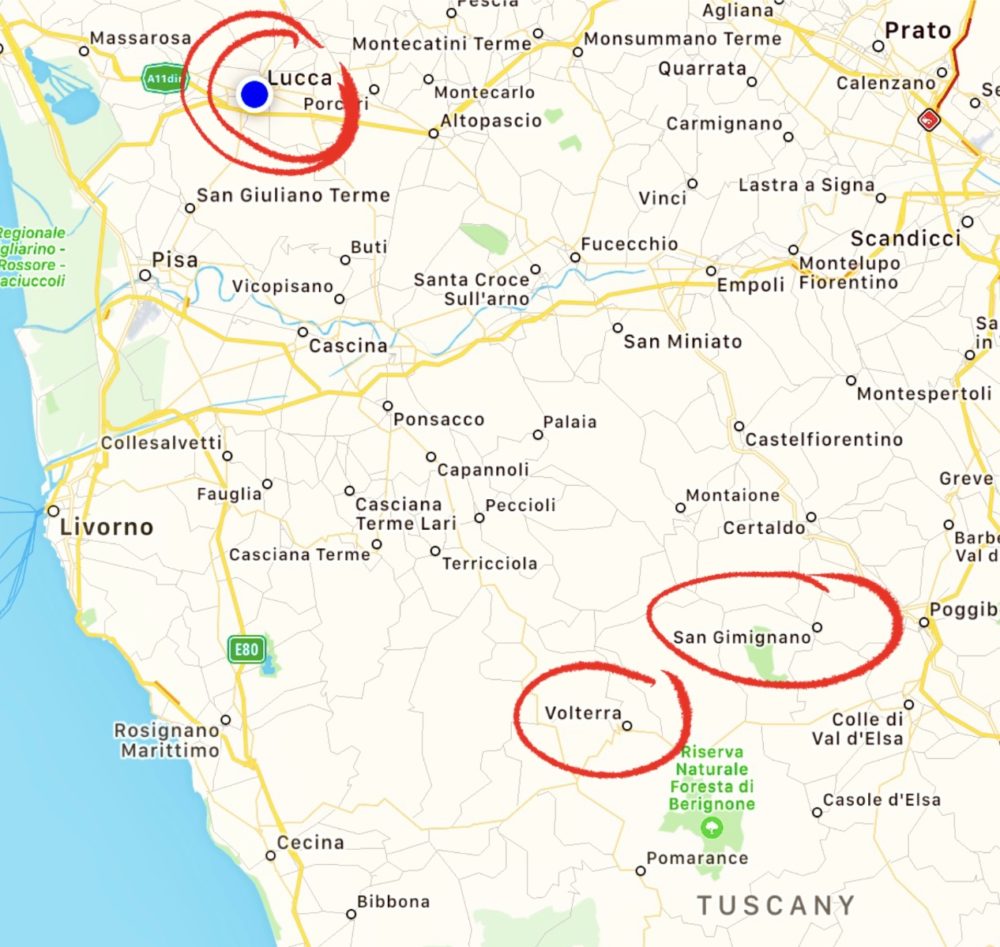
Volterra
This town dates back to the 8th century BC with the Etruscans, followed by the Romans, and then various rulers during medieval times. Each impressed their aesthetic and functional characteristics into the town’s form and architecture. Roman towns (often built over Etruscan towns) were planned on a grid. The more organic alignment of roads and paths occurred later, along with a new wall built to accommodate the increasing population. The older walls were robbed to create the new walls or used as the wall of new structures. Roman and some Etruscan arches remain evident in full form or as highlights surrounded by an infill of brick or stone.
Our guide Maria pointed out that before the towns built walls, towers were the predominant form of defense against invaders. Towers grew in clusters with the sturdiest for habitation and others that housed grain, silk, wood, etc. Wood or rope ladders were necessary to access the upper floor and bridges facilitated access from one tower to the next. Many towers were not structurally sound and collapsed. In later generations when the town’s wall became the chief line of defense, the towers became encapsulated into larger structures to form the palazzos we see today. This was especially evident durning the Renaissance when the Florentines took over the town for the aluminum deposits nearby and later the powerful Medici family. Some towers remained as watch towers to sight enemy movement in the distance.
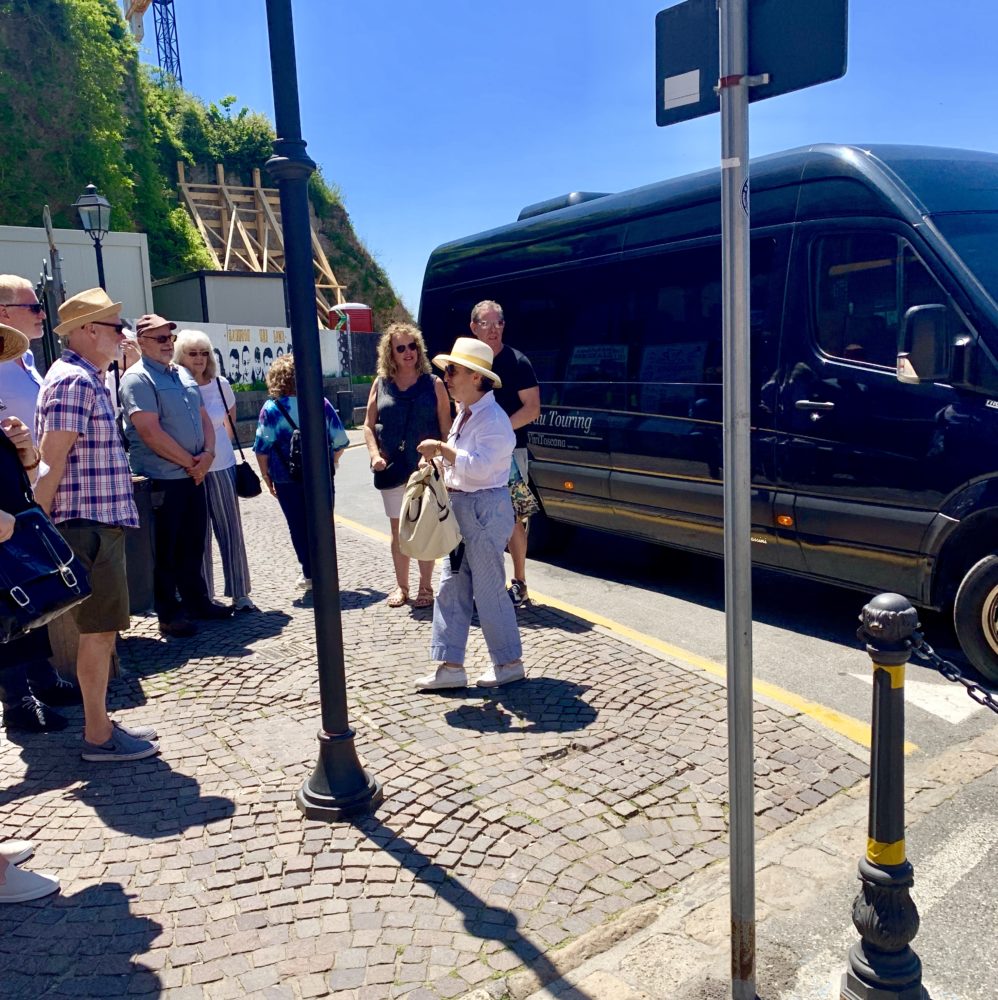
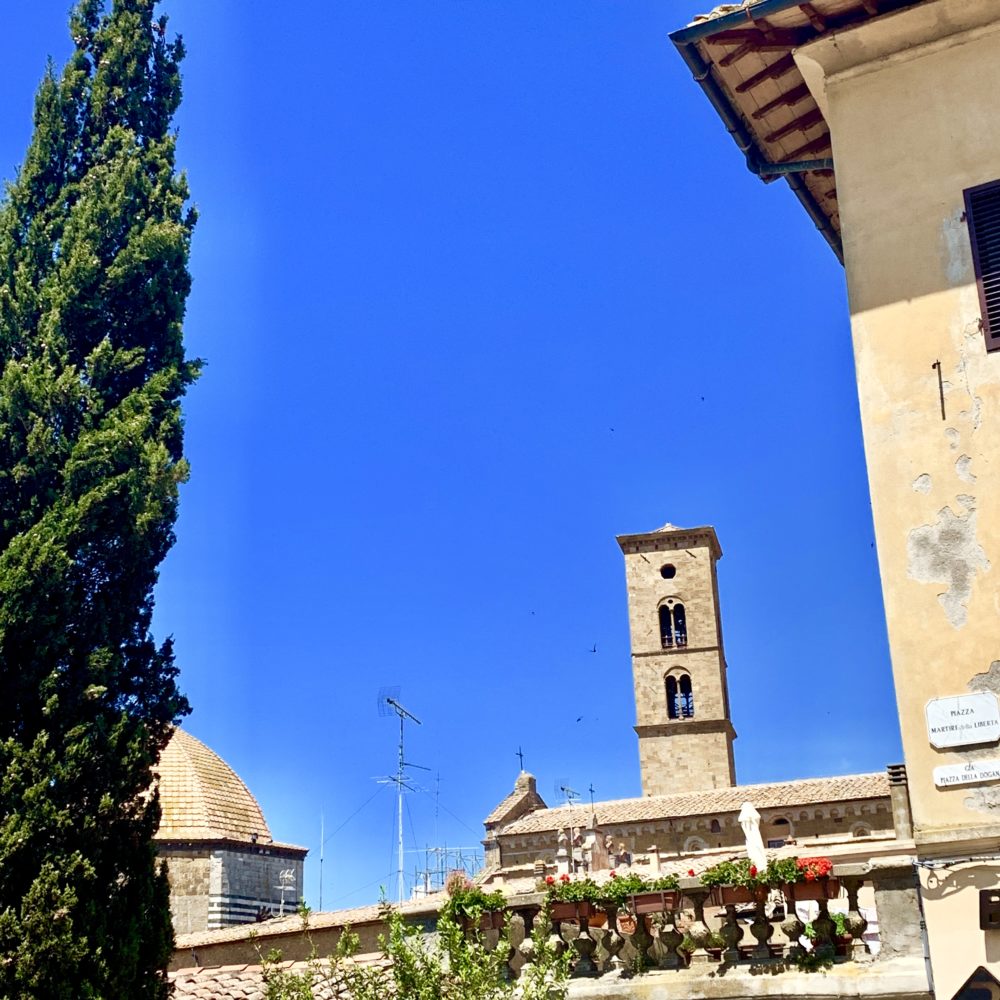
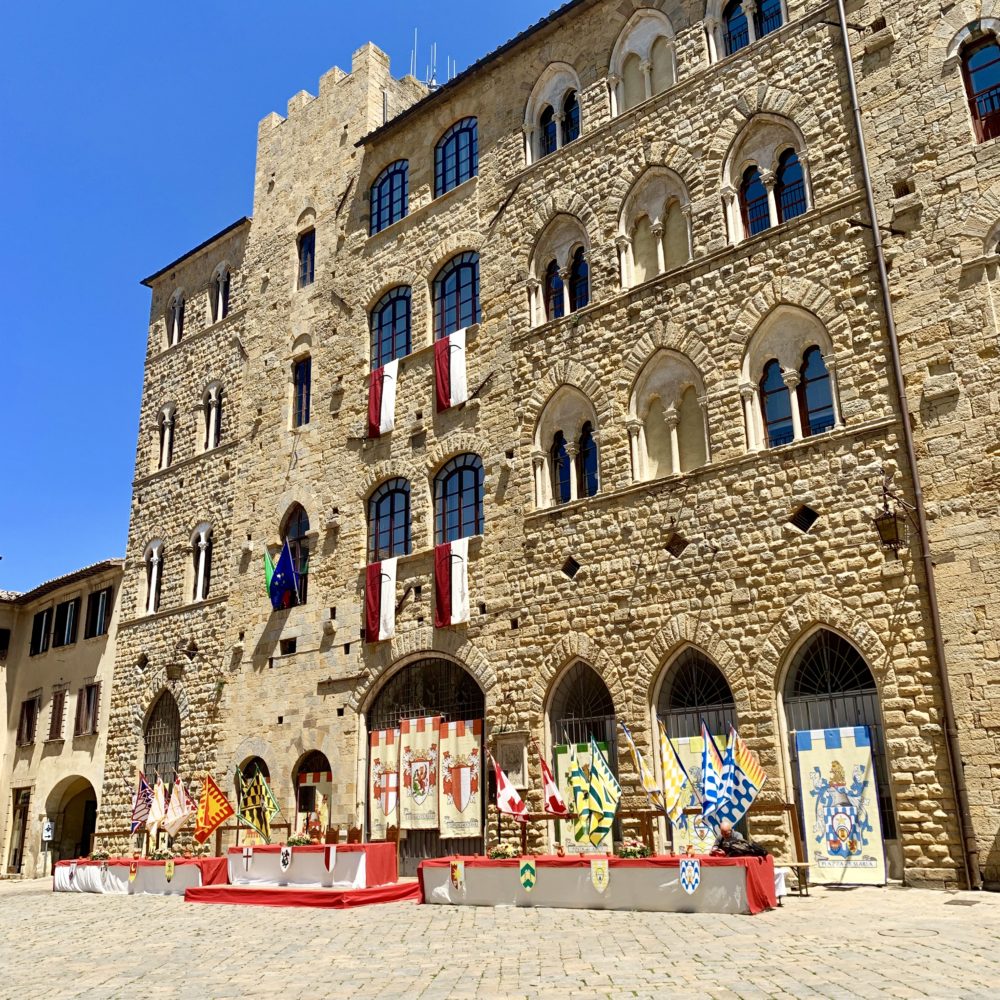
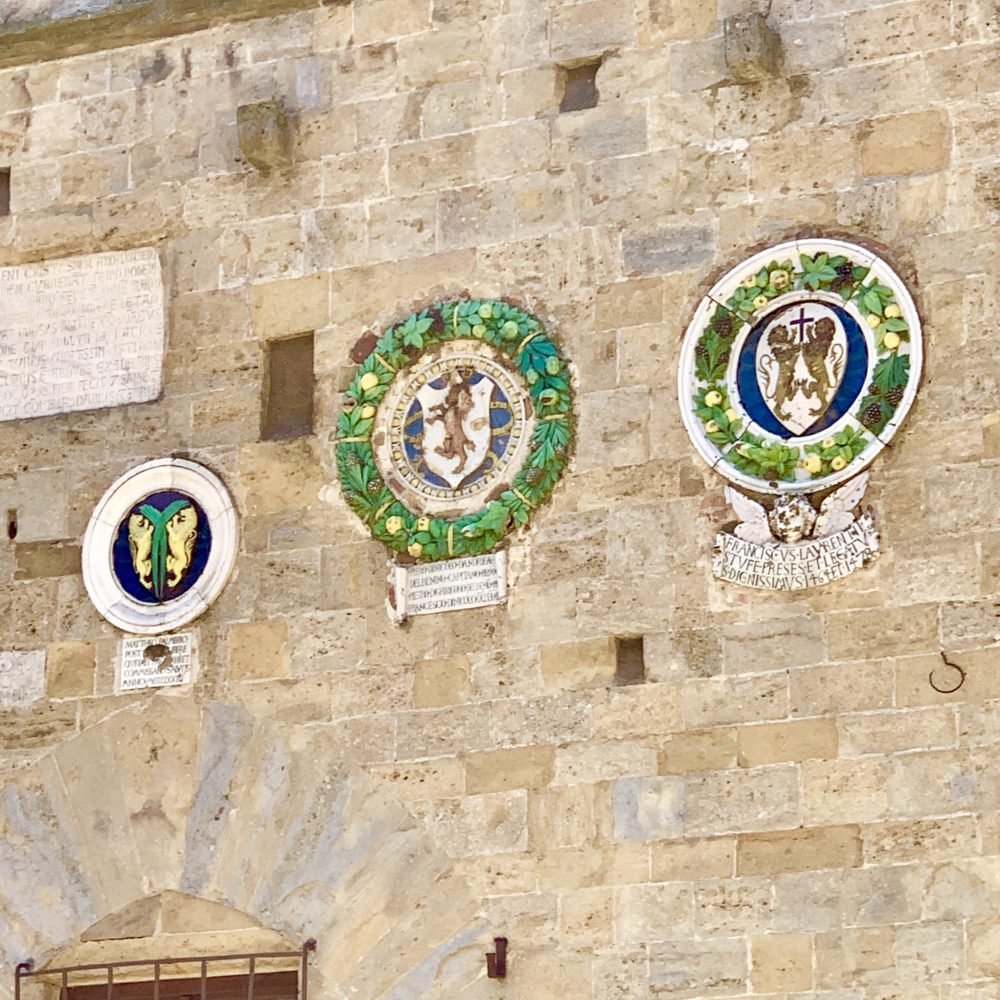
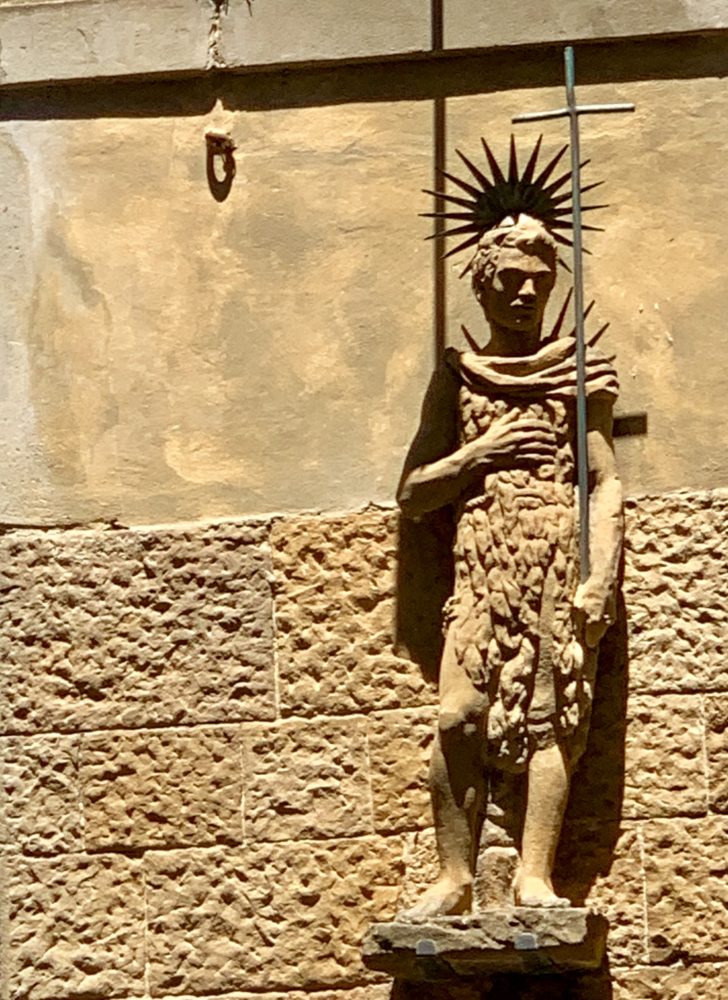
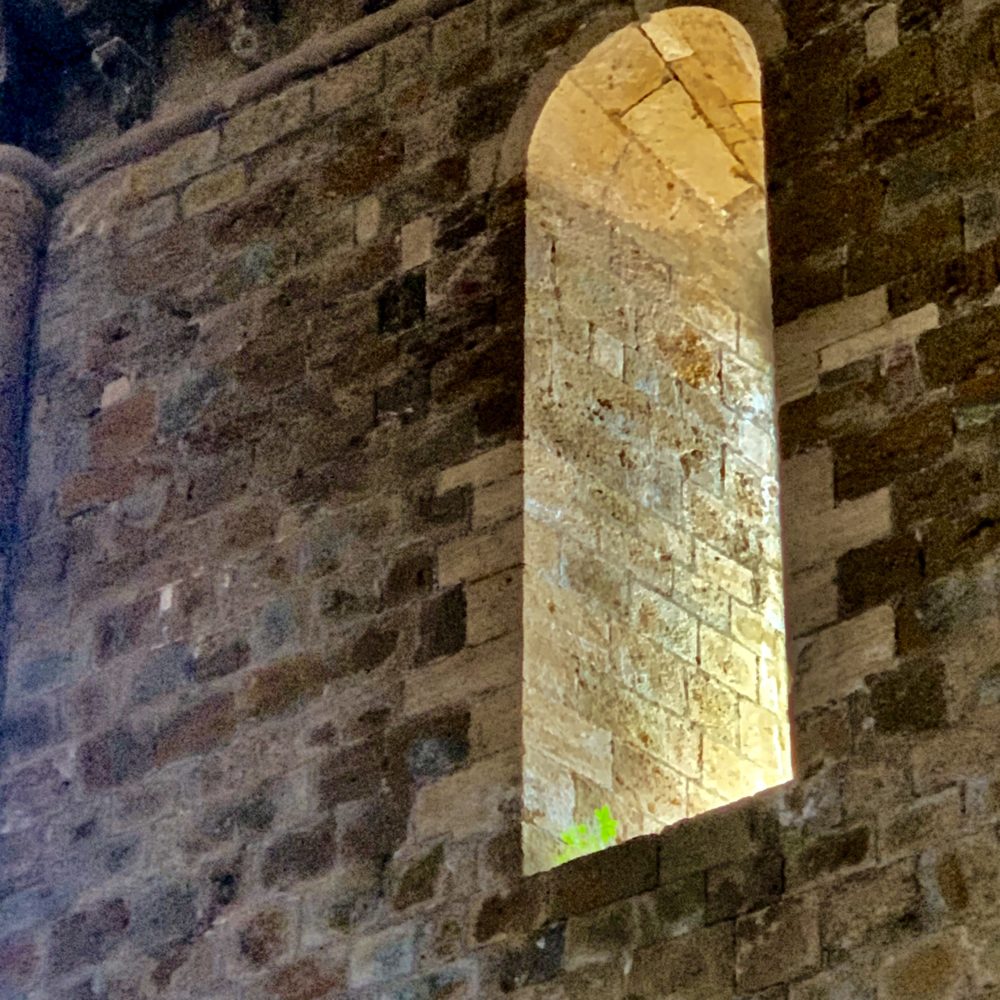
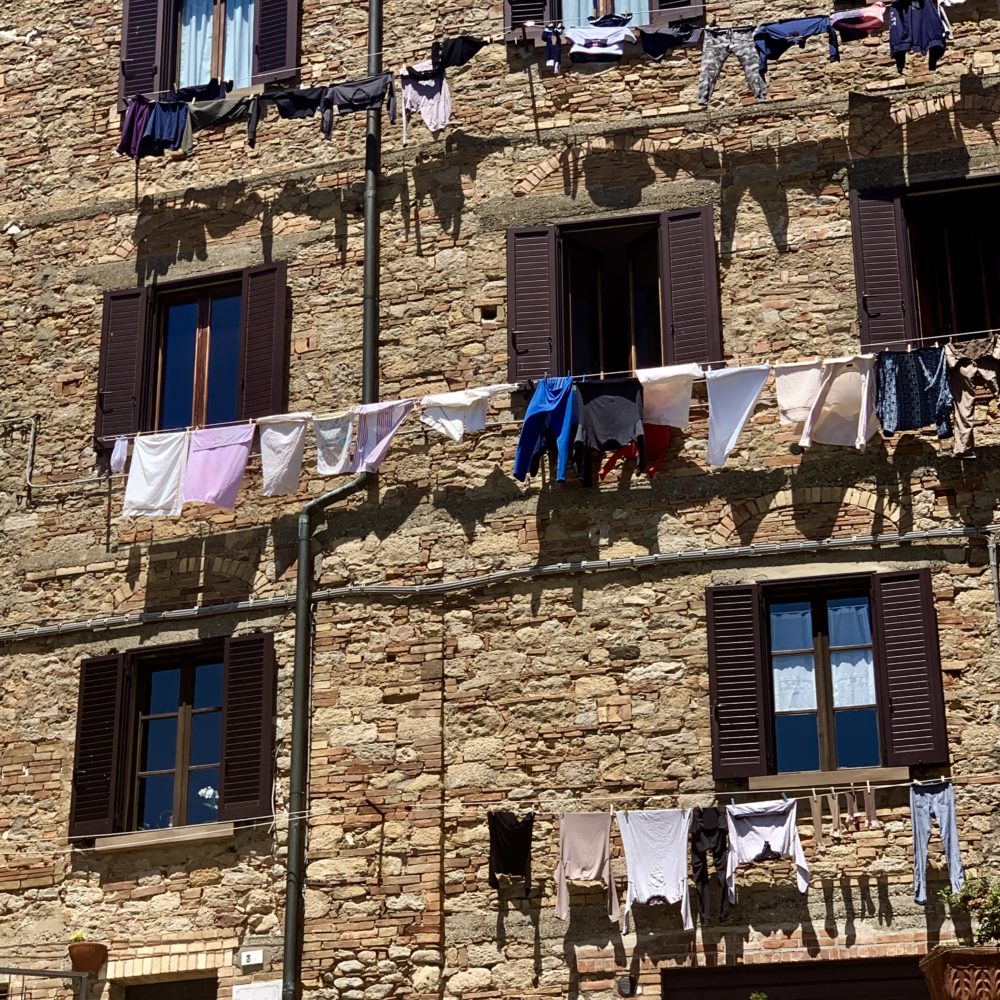
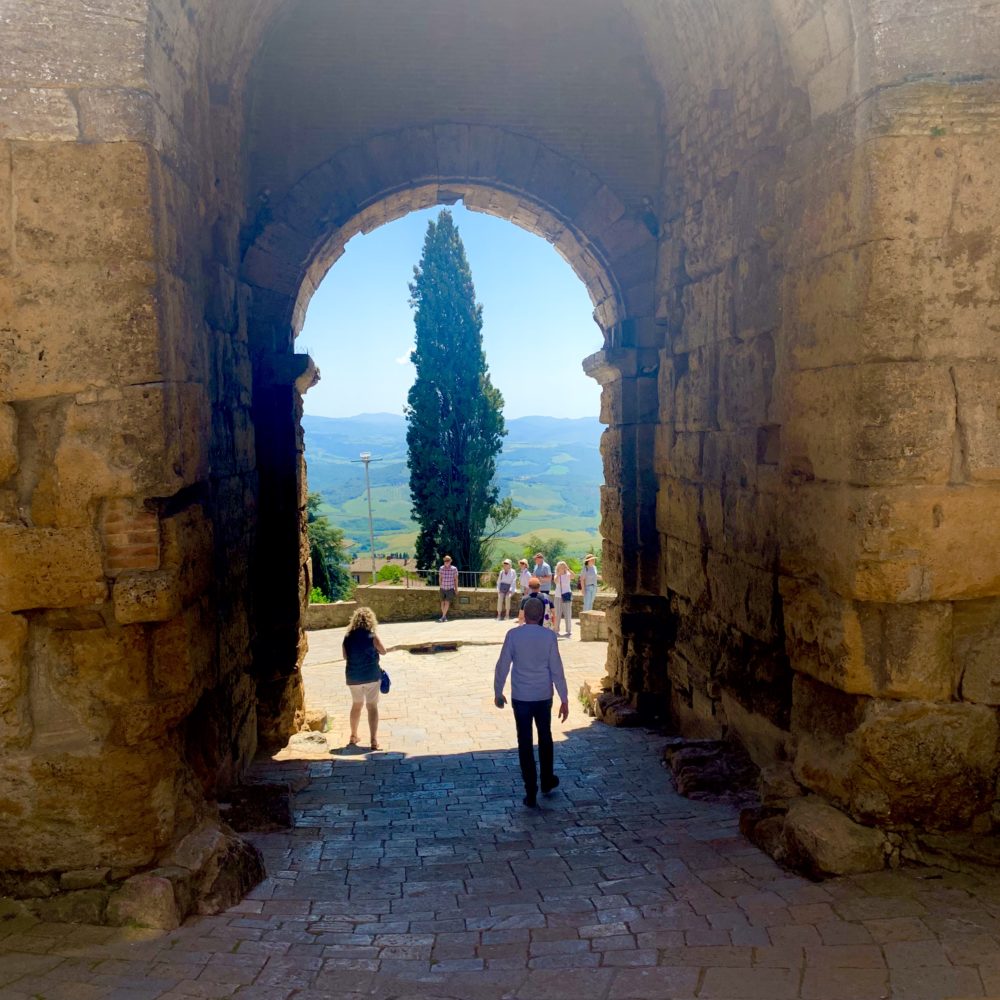
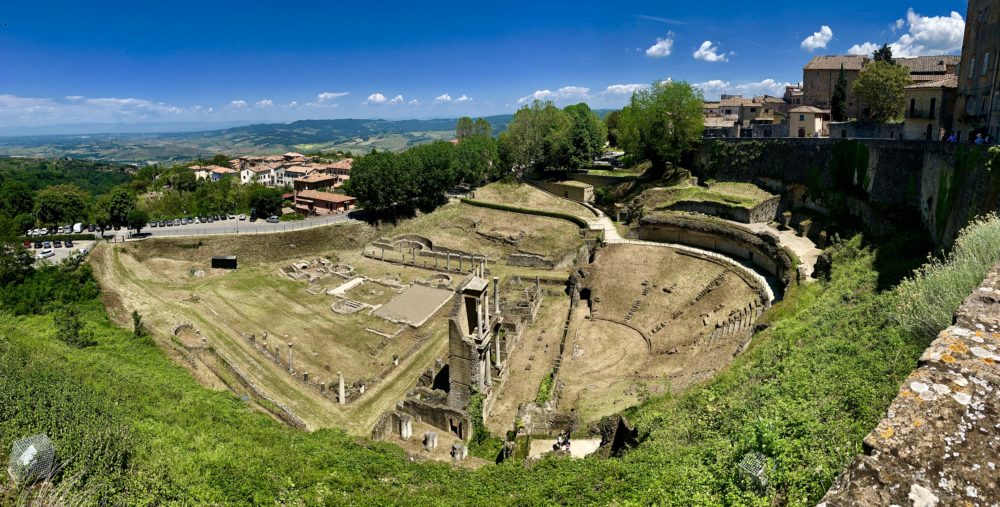
San Gimignano
Like Volterra, the town is set high on the hills away from the main road to make it harder for invaders to take over. Unlike Volterra, San Gimignano is in high gear for the tourist trade. Its retail shops and restaurants line the main spine, all displaying their products, often at a “discount.” We were there a short time, which was enough.
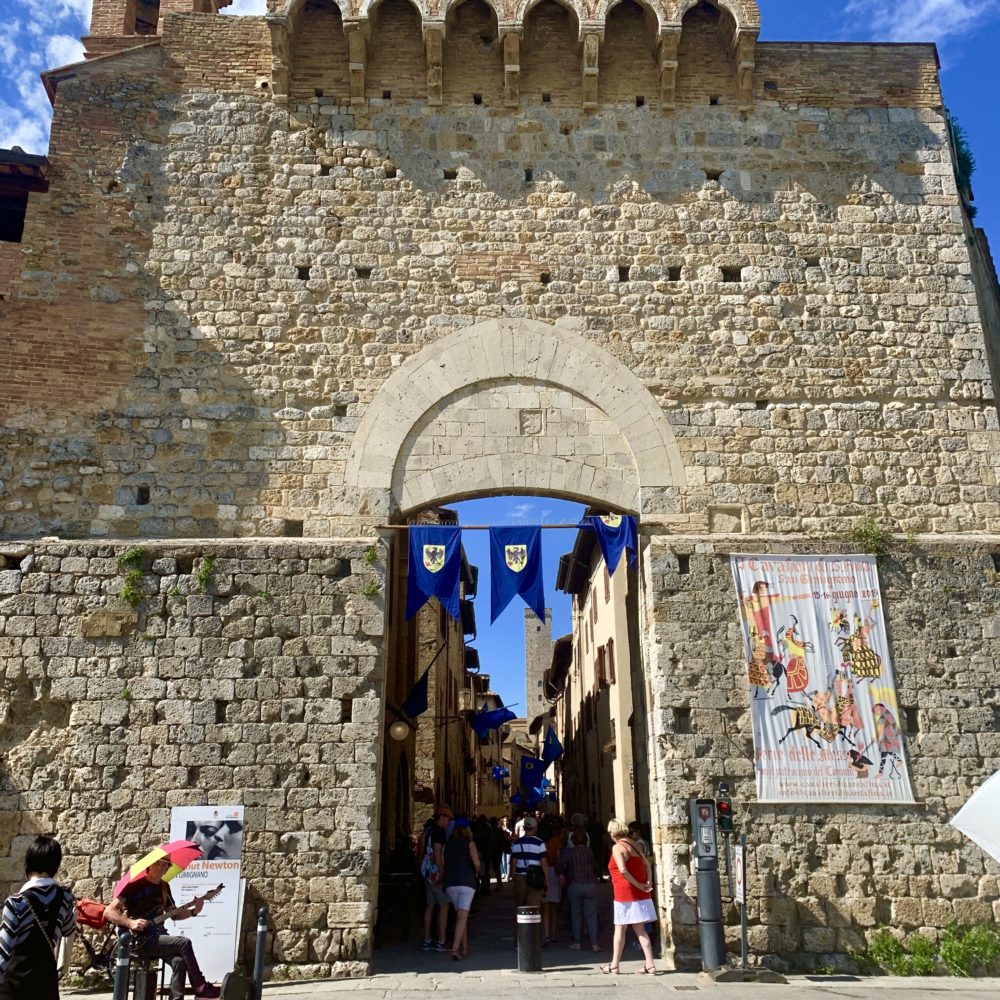
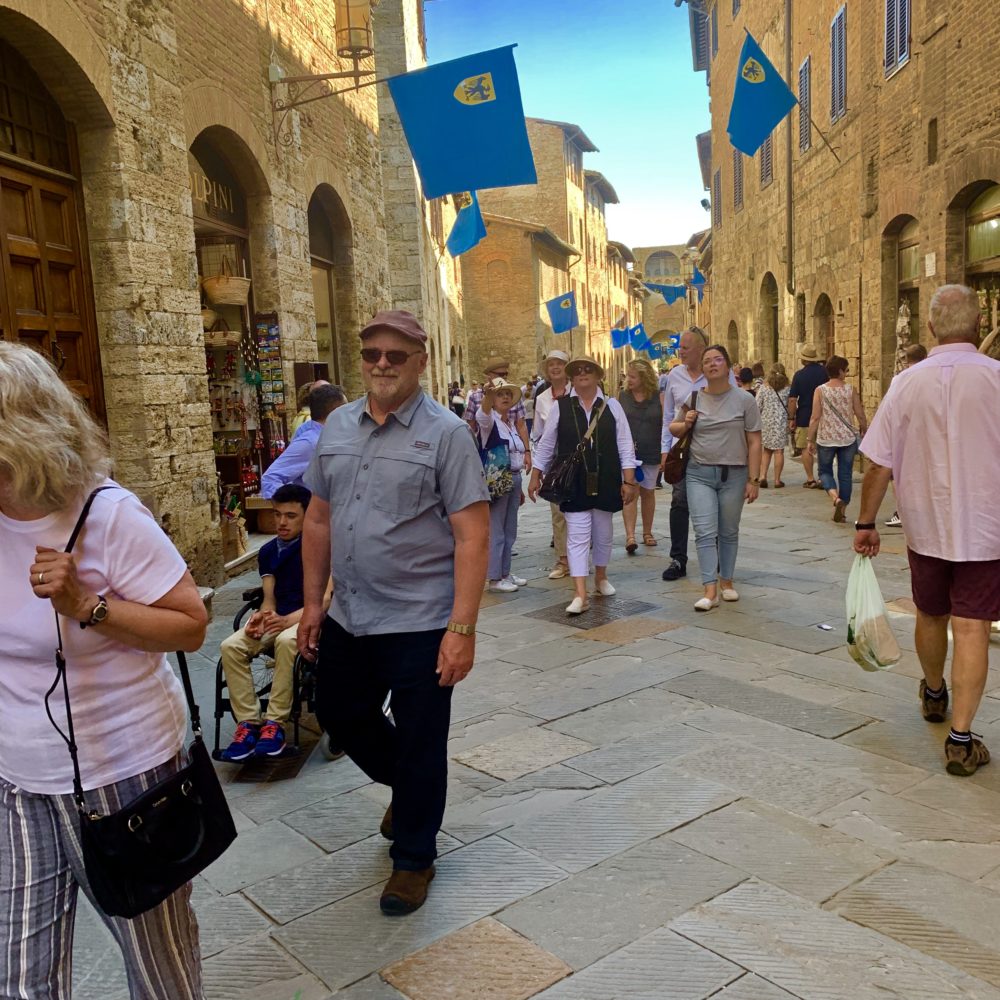
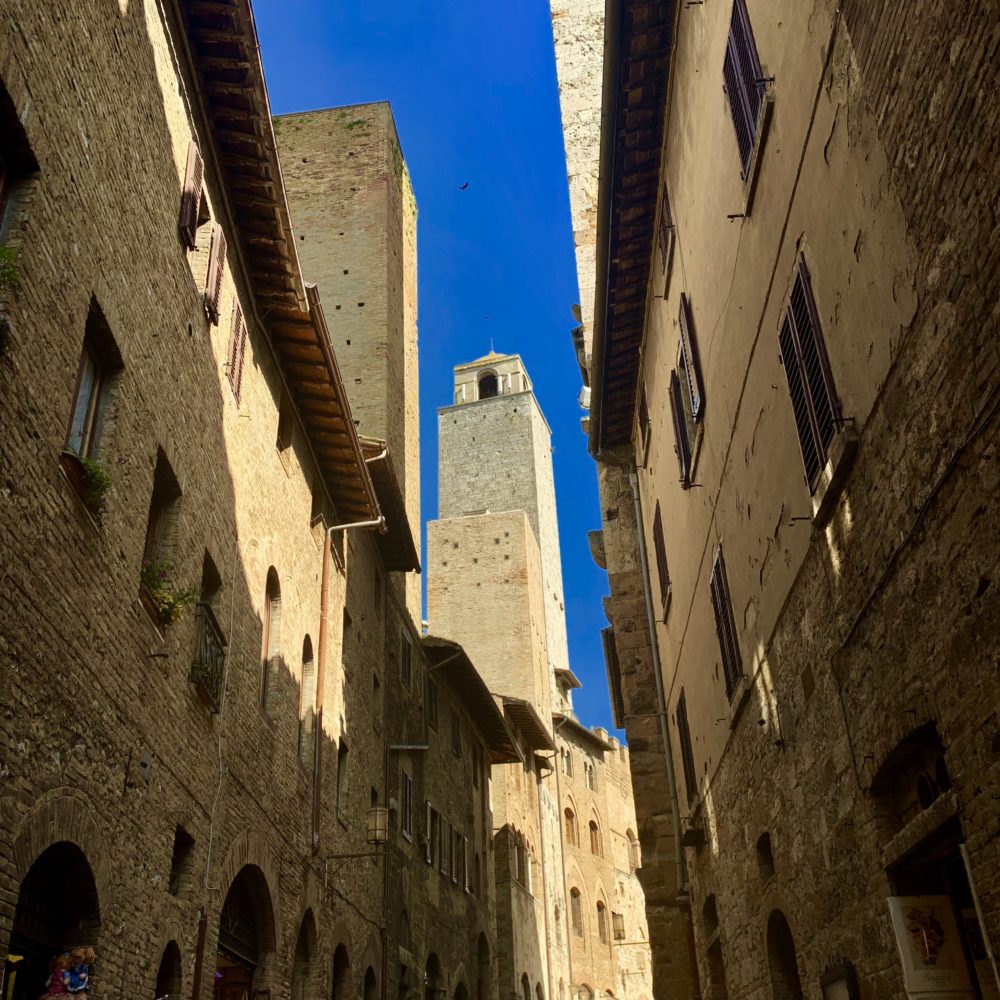
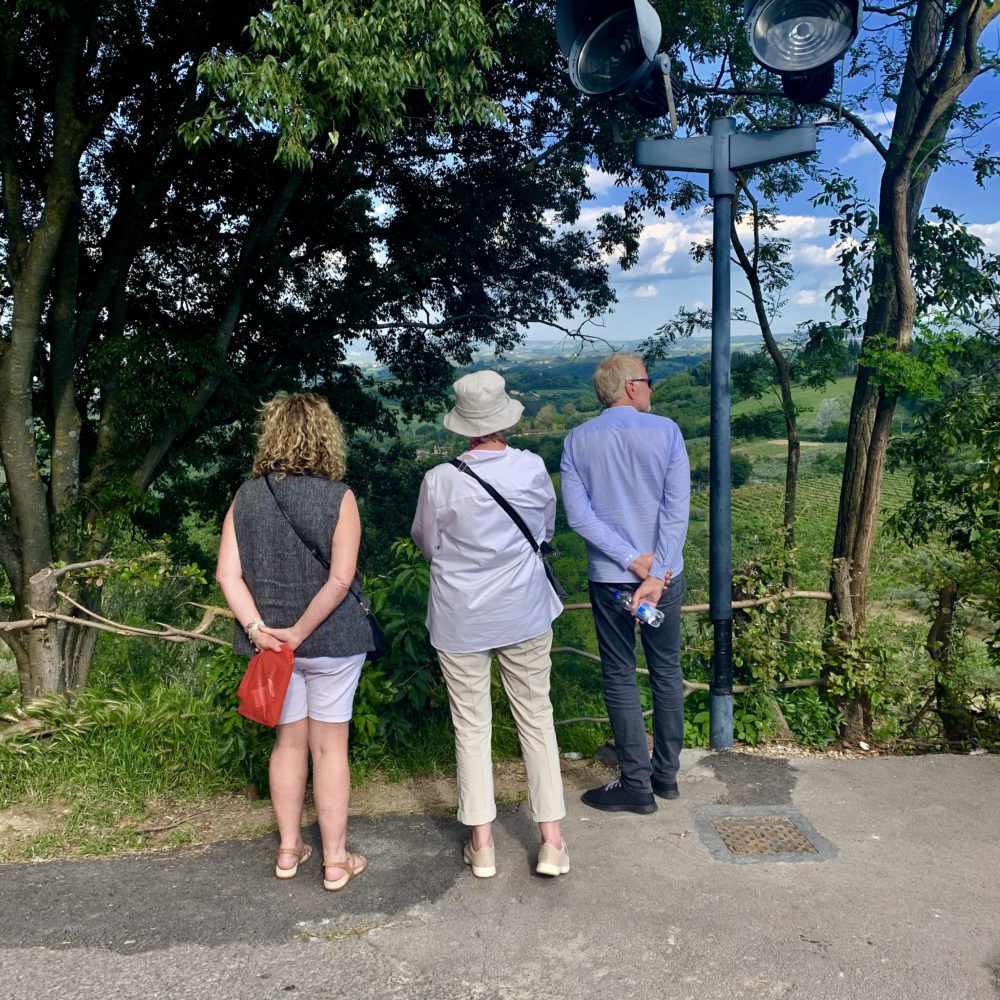
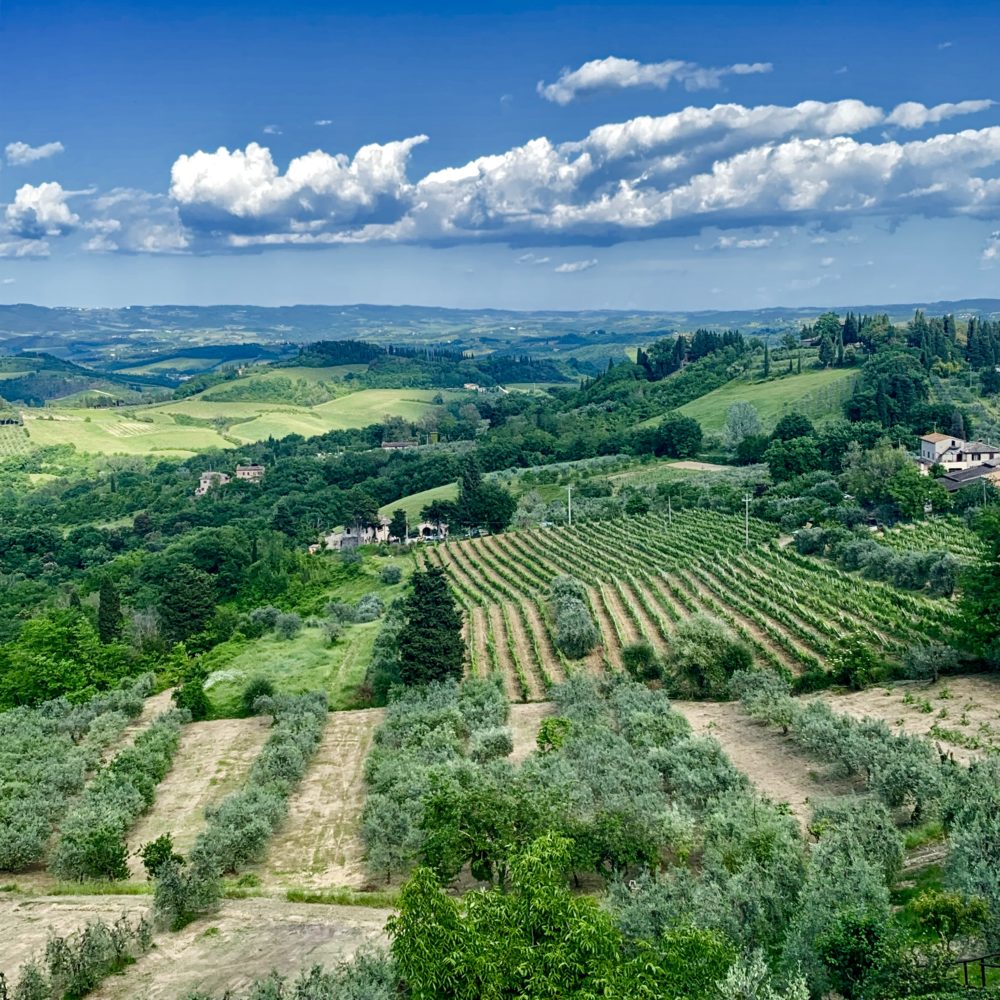

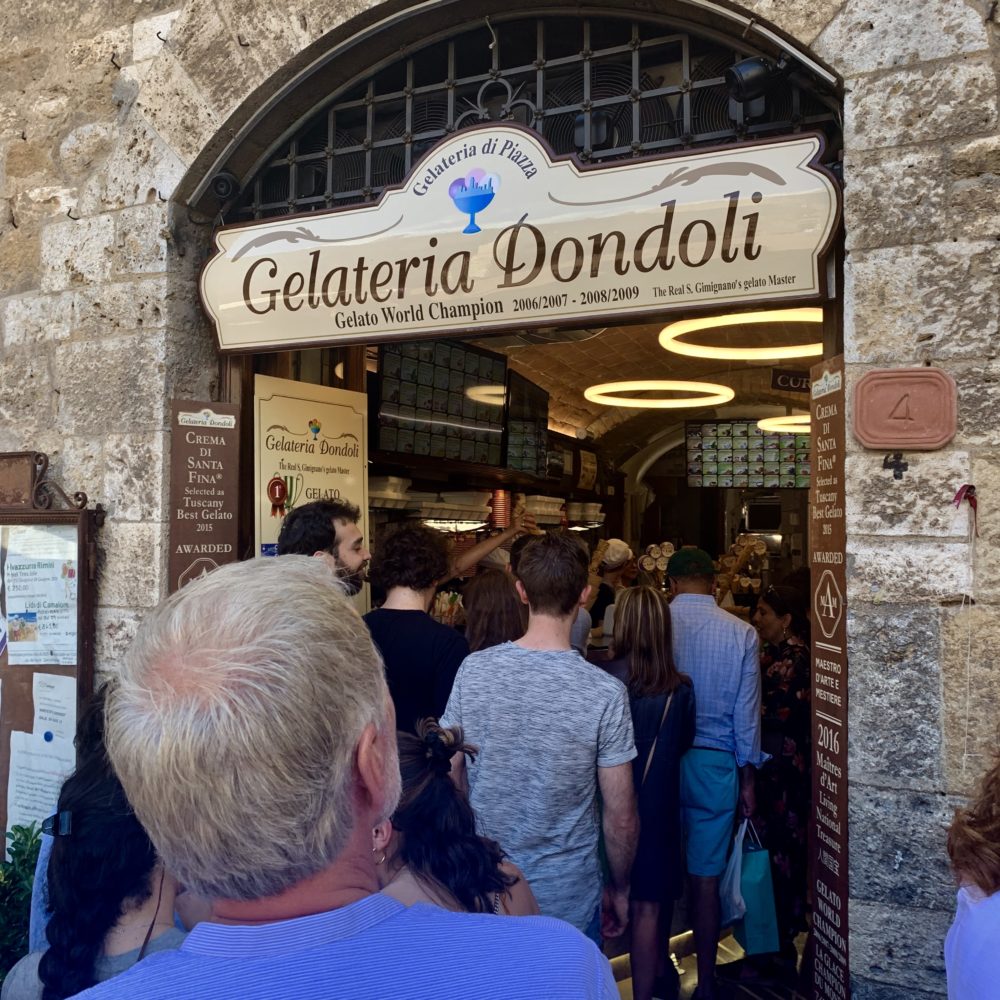
Walking Tour of Lucca
Lucca is one great town. A wall, now topped with trees, includes a 4.2 kilometer walking/bike path enjoyed by the Lucchese and tourists alike. Some of us took a pleasant late morning bike ride thanks to Bob Colegrove’s encouragement. Whoever planned the reuse of the wall, recognized its importance as a physical, visual, and cultural line of defense of the expanding post-war population. In many areas, large expanses of lawn allow one to view and appreciate the scale of this iconic town form. Large trees form the outside perimeter, visually blocking foreground views of the sprawling town of Lucca beyond. Gates punctuate the wall for pedestrian and vehicle access.
Our second official day (03 June- Richard’s birthday!) started off with another bike ride (smaller group than the day before) and a three-hour walking tour by our guide Maria. Much of the town’s interior has pedestrian-only or extremely limited vehicular access. Maria pointed out that each family is only allowed one car within the walls, provided that they have a garage or a permitted space. Accessing one’s home or business does not allow wandering through the town by car.
The town has over 100 churches. Many are now under the control of town due to changes in power over the centuries. (Too long a story for this post!) White marble facades are prominent because Lucca is close to the famous quarries of Carrera. Being able to defend themselves from invading powers over the centuries, much of the town’s medieval and Renaissance architecture remains intact. So does the culture of the Lucchese (the people of Lucca) who seem a bit restrained in their interactions with tourists. Many shops seem to cater to both locals and foreigners.
The Lucchese keep their city in prime condition. Robert saw street sweepers and recycling pick-up every morning. Graffiti is not evident as in larger Italian cities. The Lucchese are not as aggressive as people in larger cities such as Palermo and Rome. No one is agressively hawking their wares or restaurants. While friendly, they do not seem to voluntarily make eye contact but will readily return your greetings.
The town’s source of wealth has varied over of the centuries. Its wealth started out with merchants. Their silk industry was a major component. Upper floors of buildings were left open to the air to allow drying of dyed textiles. This later changed to land holdings (Lucchesse were reluctant to invest their wealth in the New World), which forced them into agricultural production (wine, olive oil, etc.) This gave rise to banking. Since the 1990s banking made the town very rich with the sale of their city bank to a large conglomerate. Lucca is actively using these funds to restore public buildings, subsidize locally-owned shops, etc.
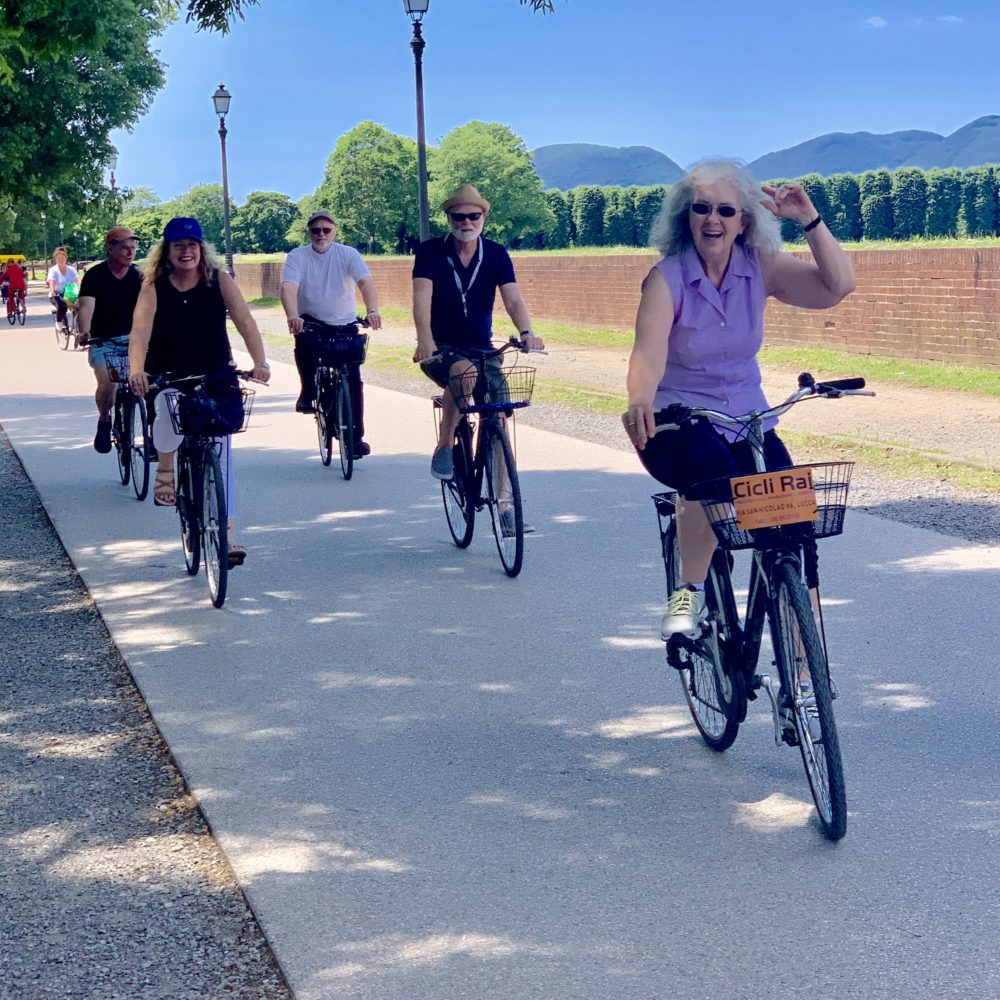
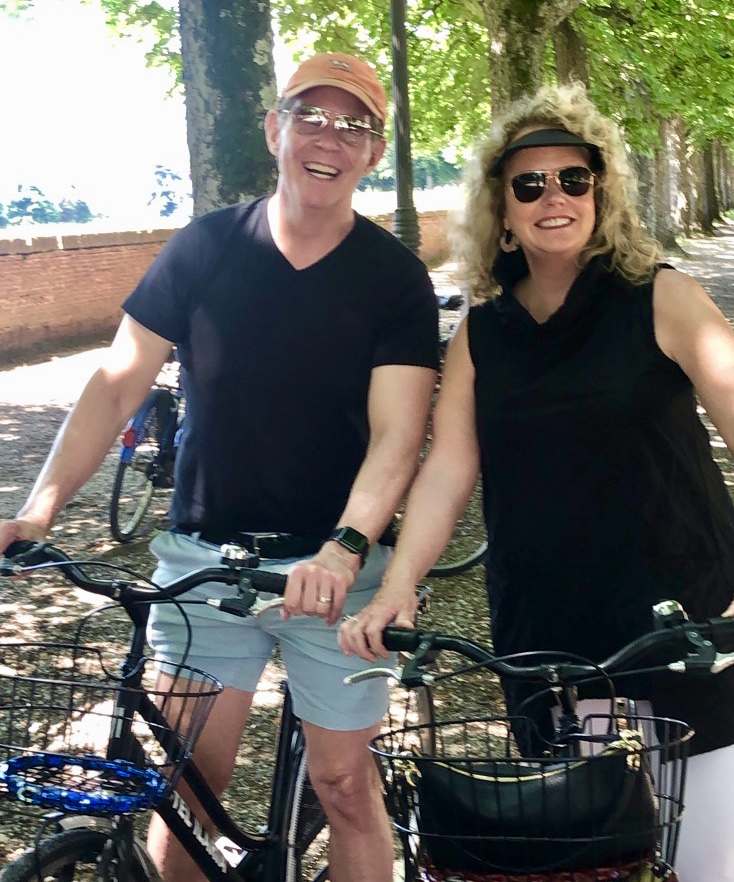
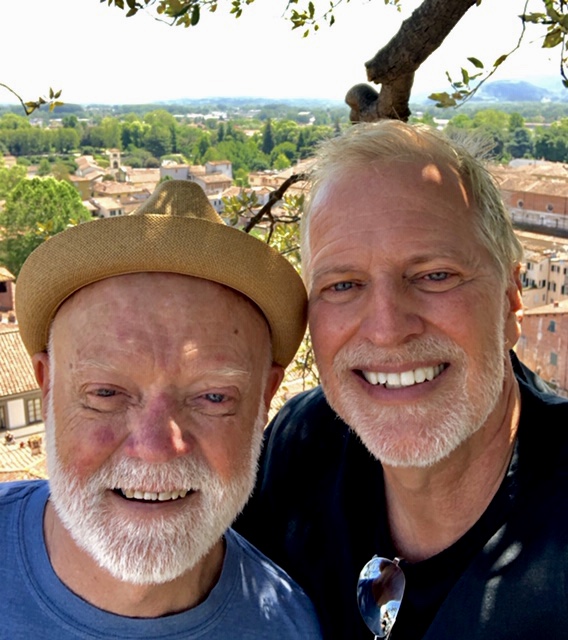
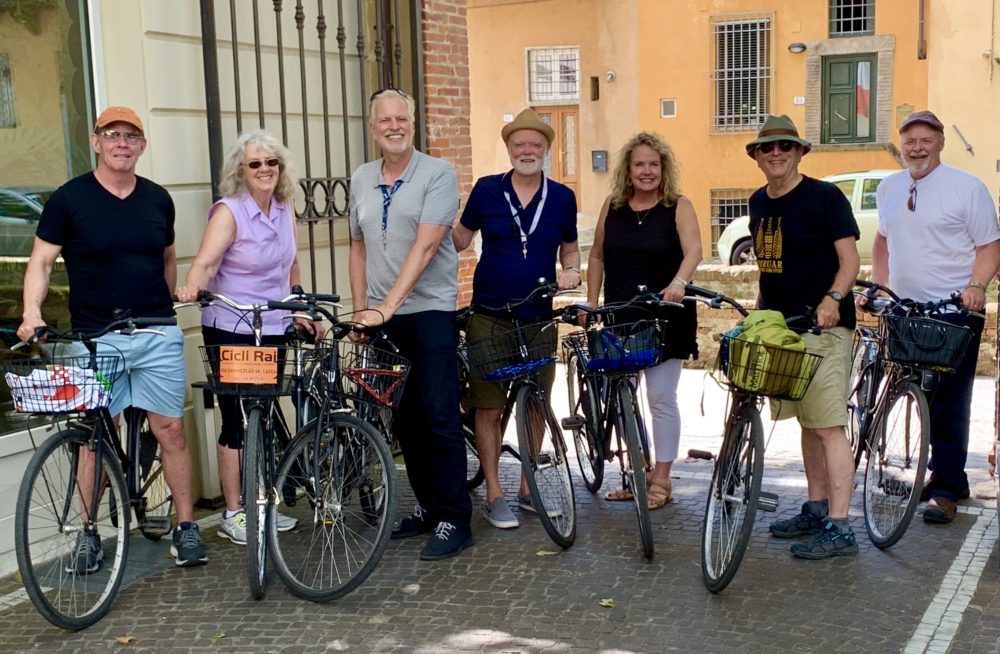
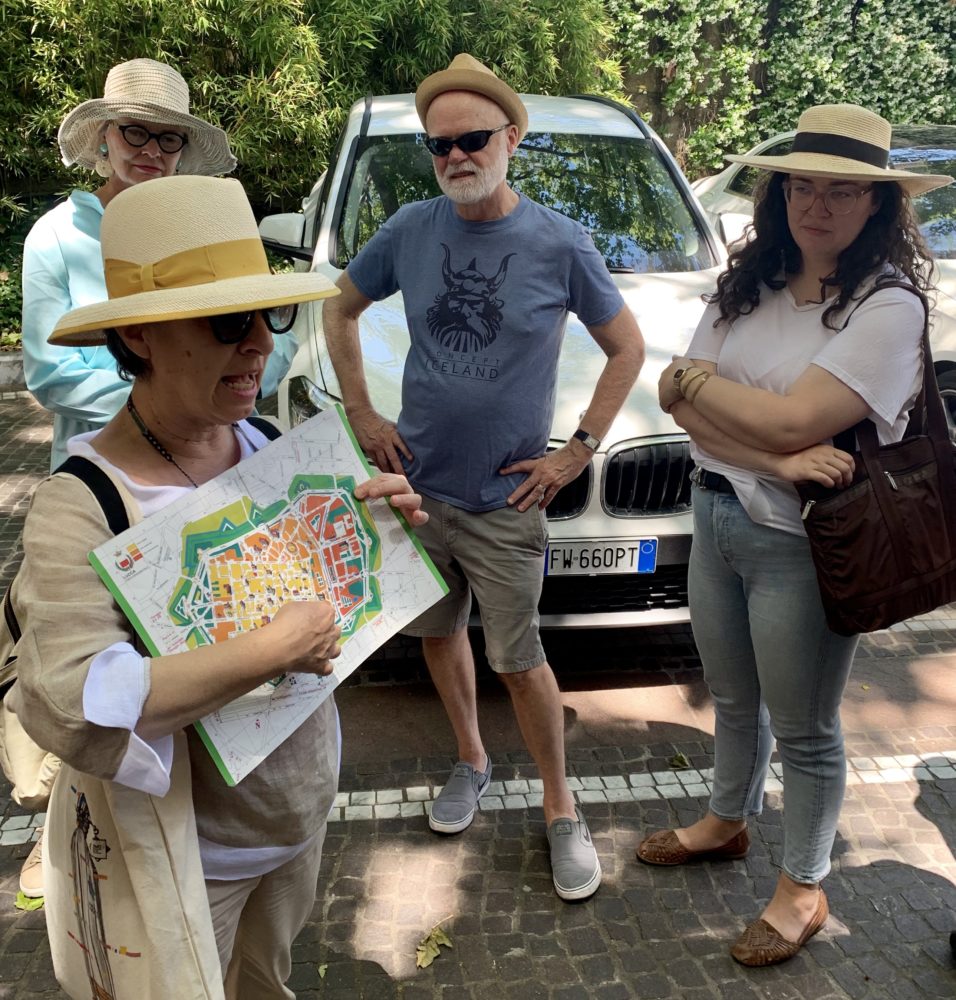
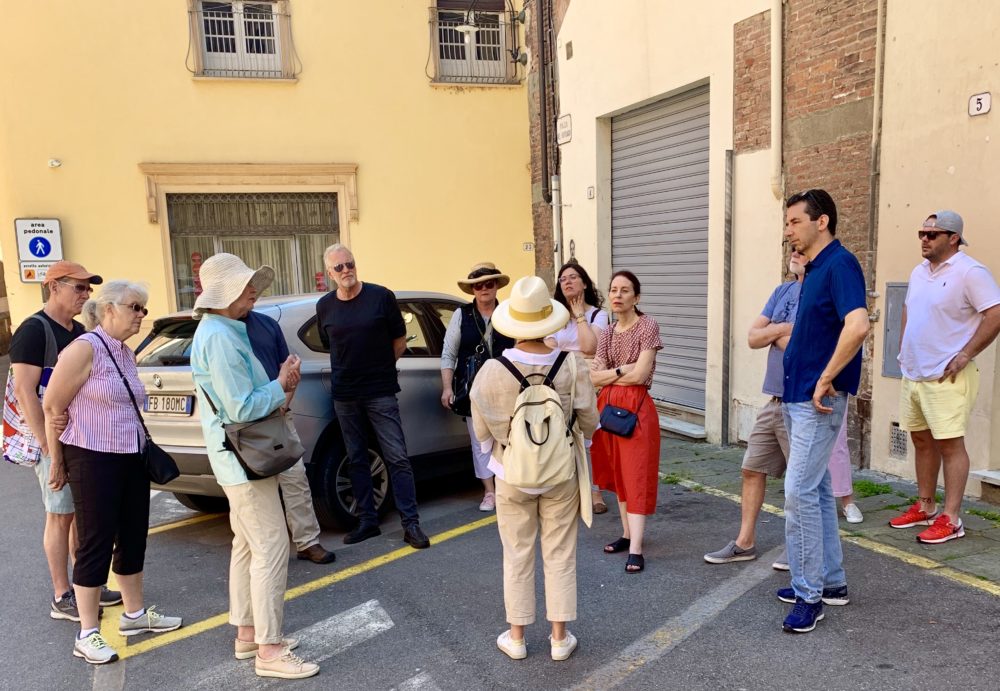
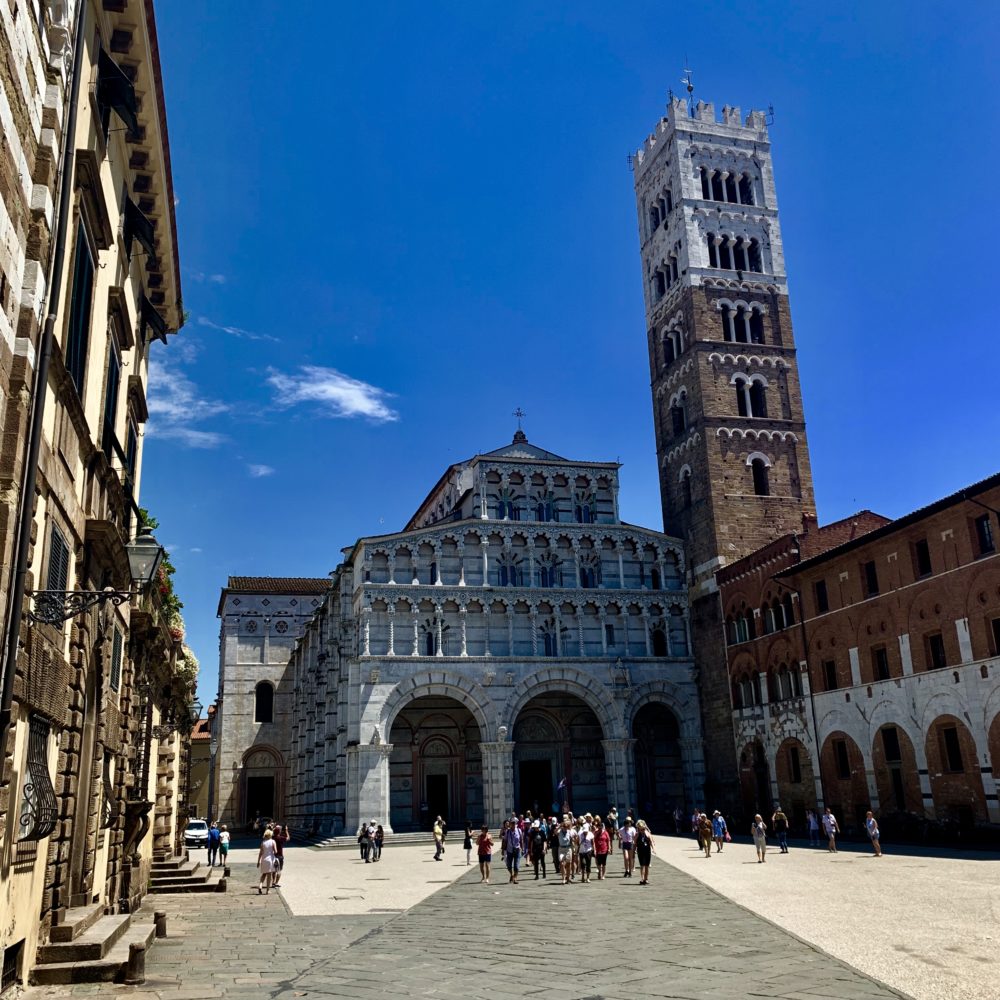
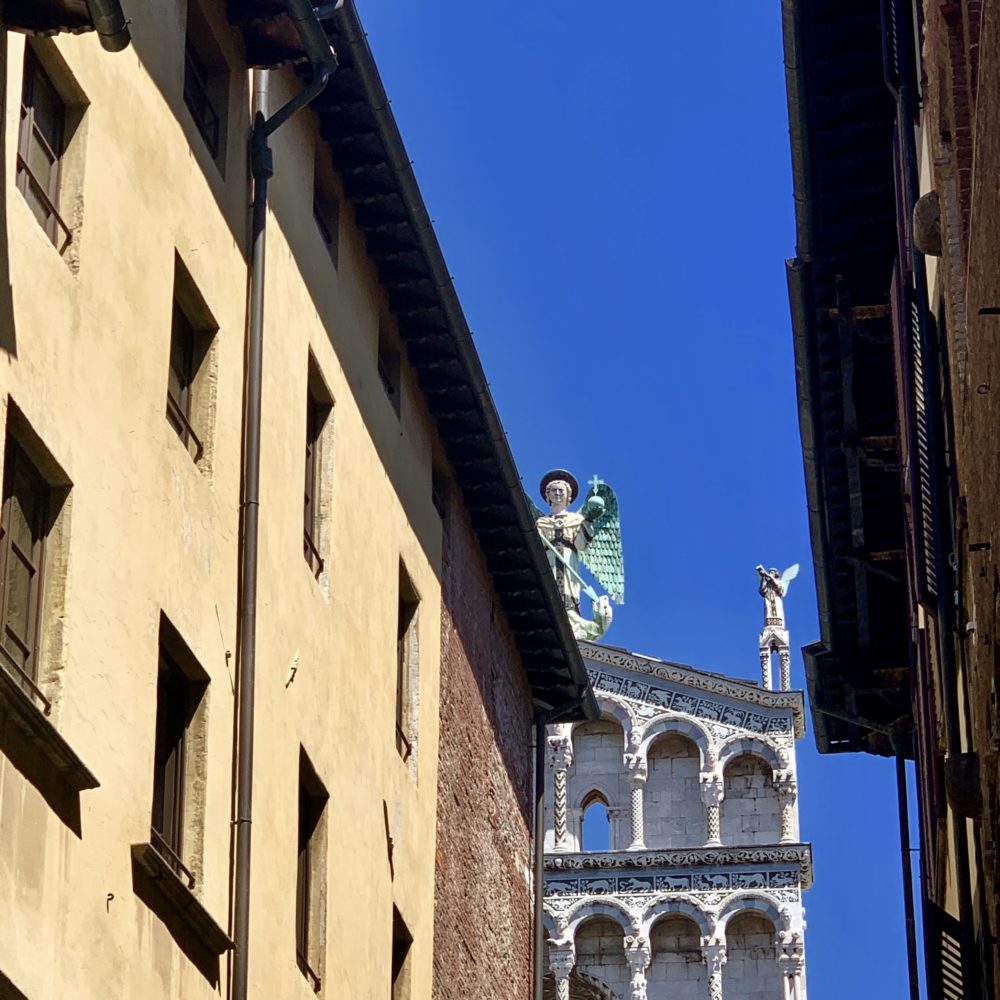
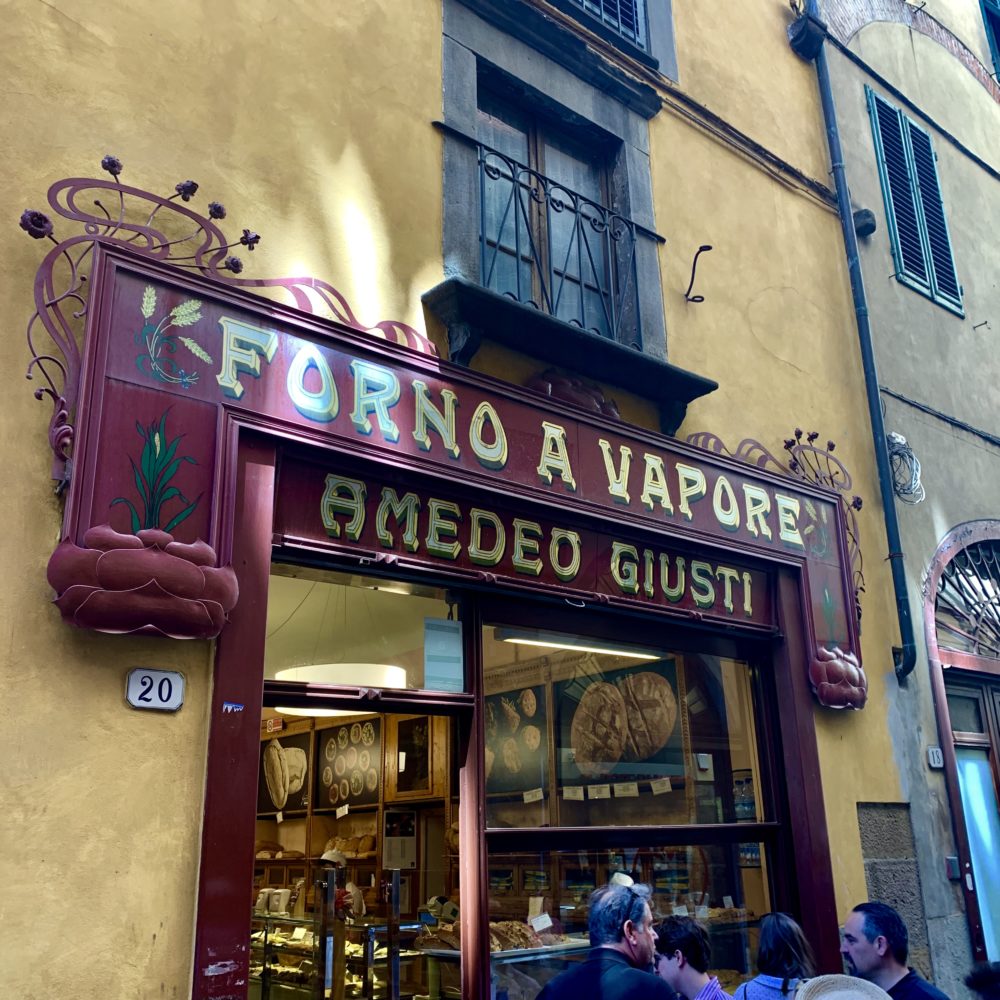

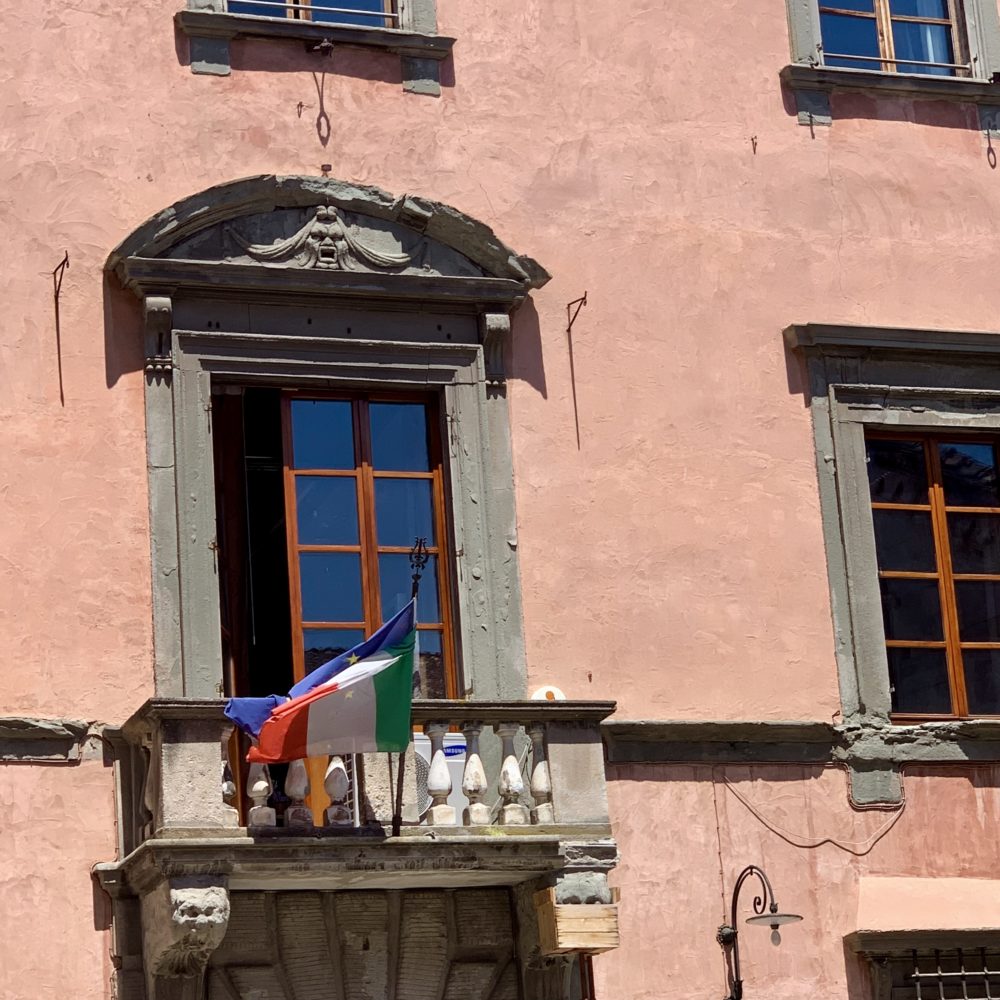
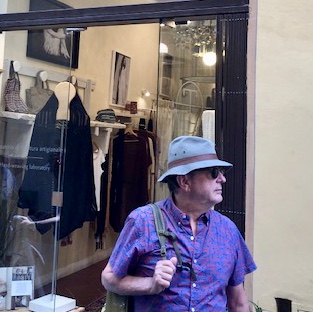
Food and Drinks!
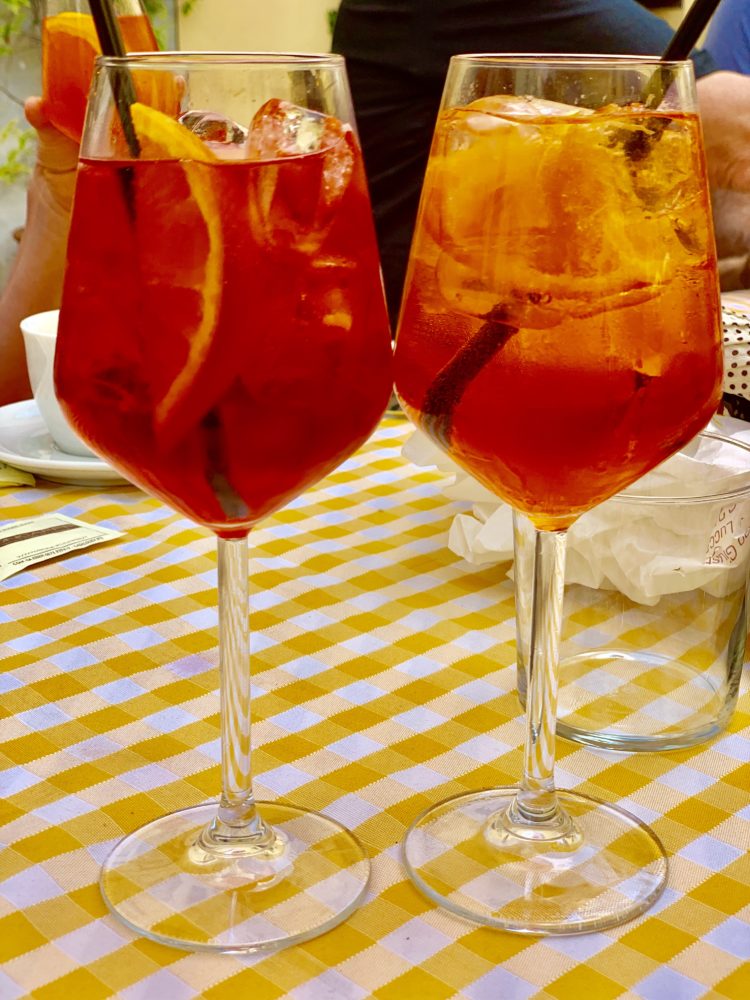
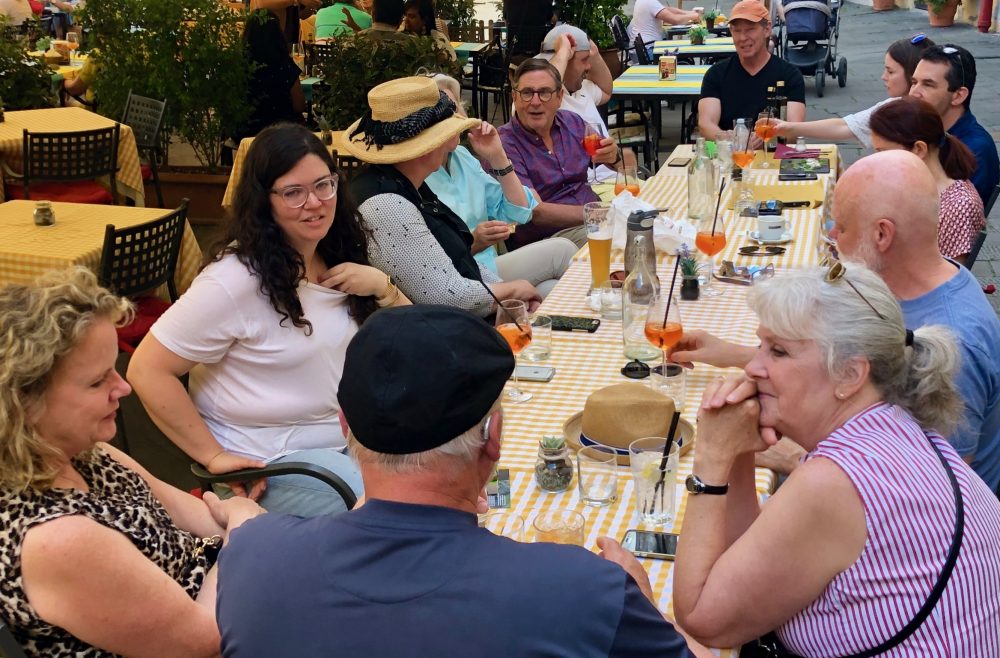
Lunch in Volterra
We stopped for a great lunch of cured meats, cheese (with honey and balsamic vinegar), and great regional wines.
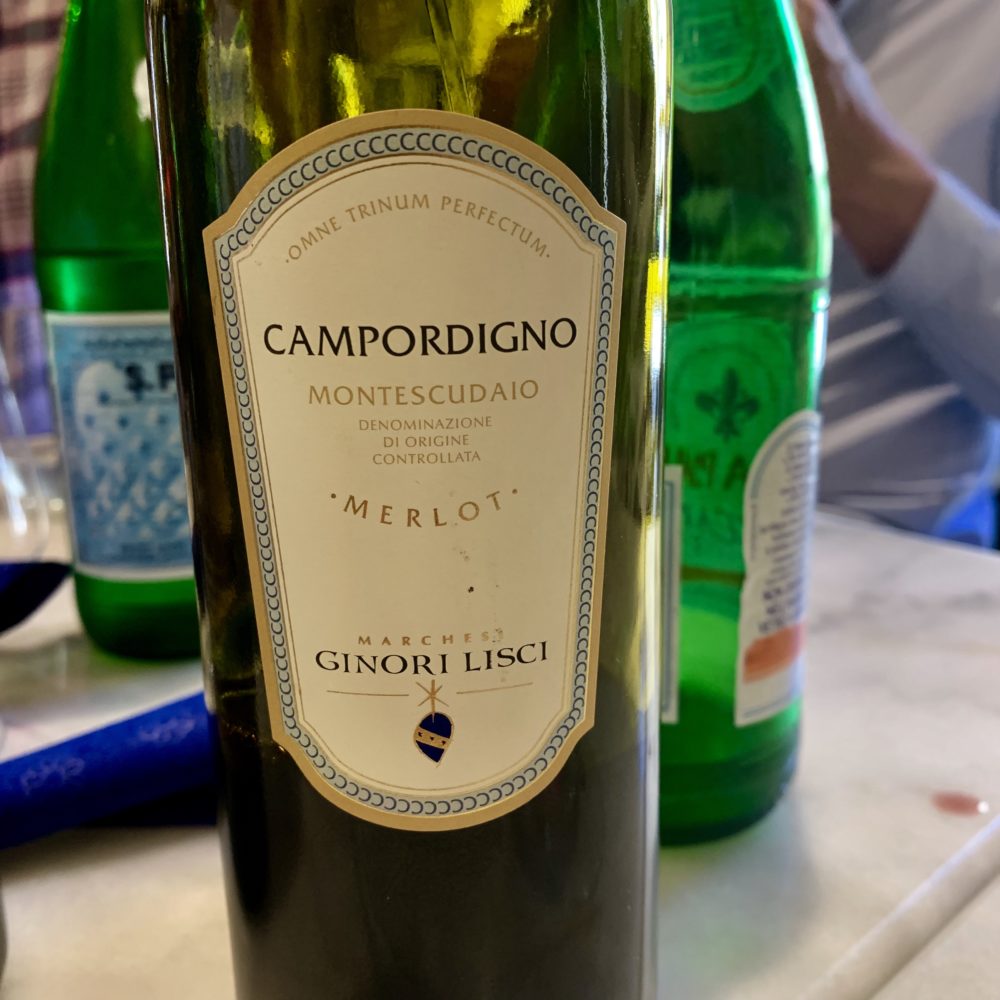
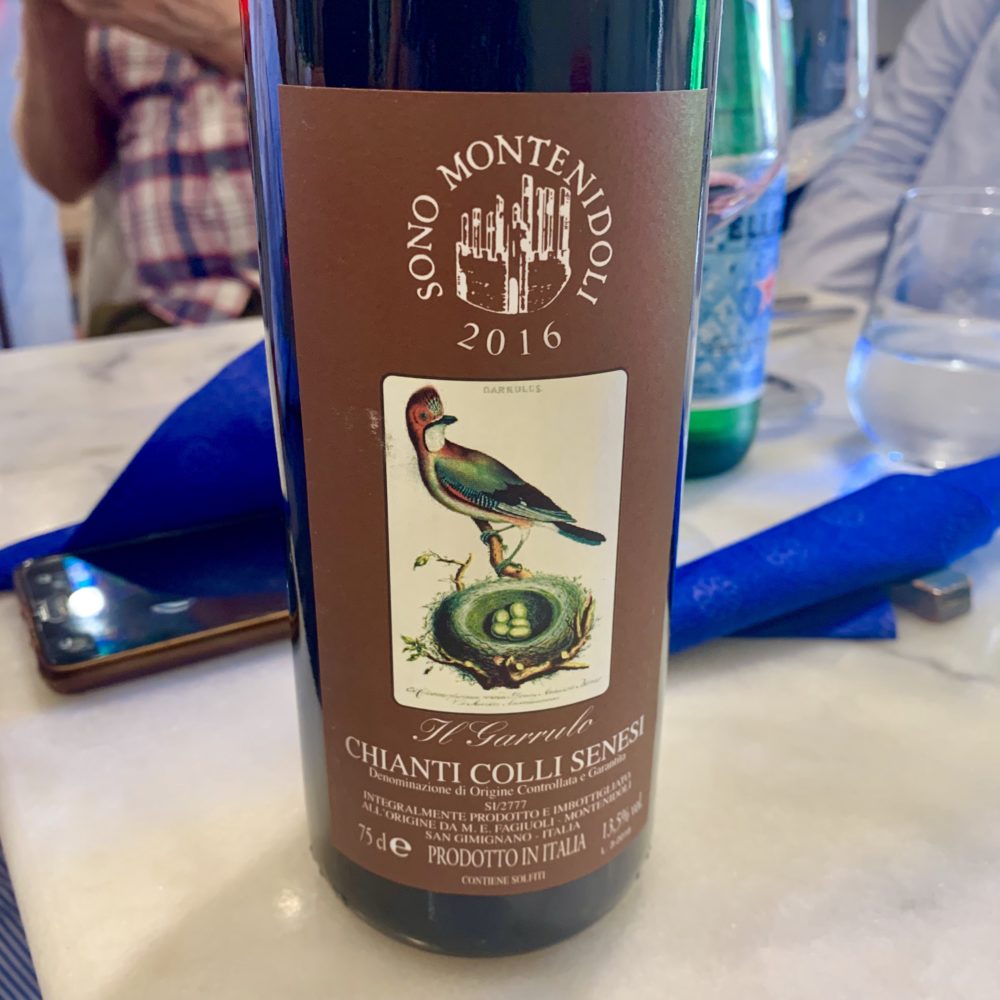
Puccini and Dinner
Lucca presents Puccini (and his friends) on a nightly basis. Great way to start the evening prior to going out for dinner.
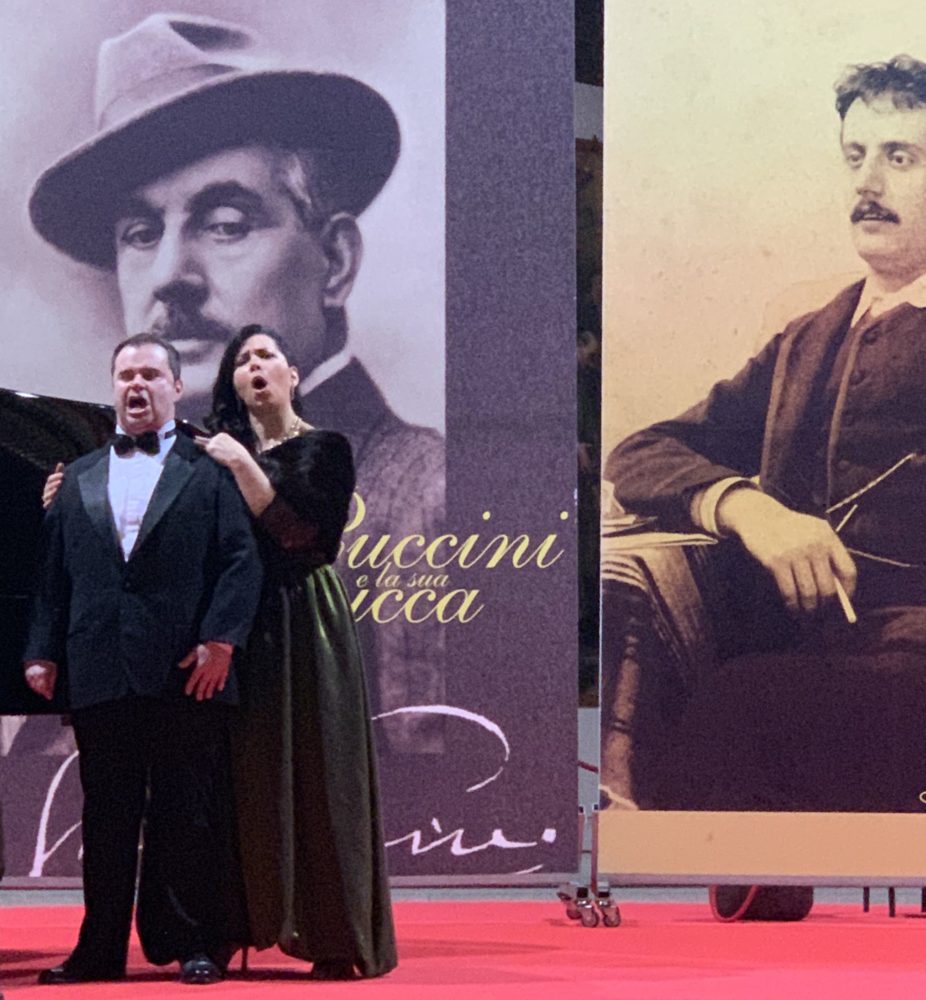
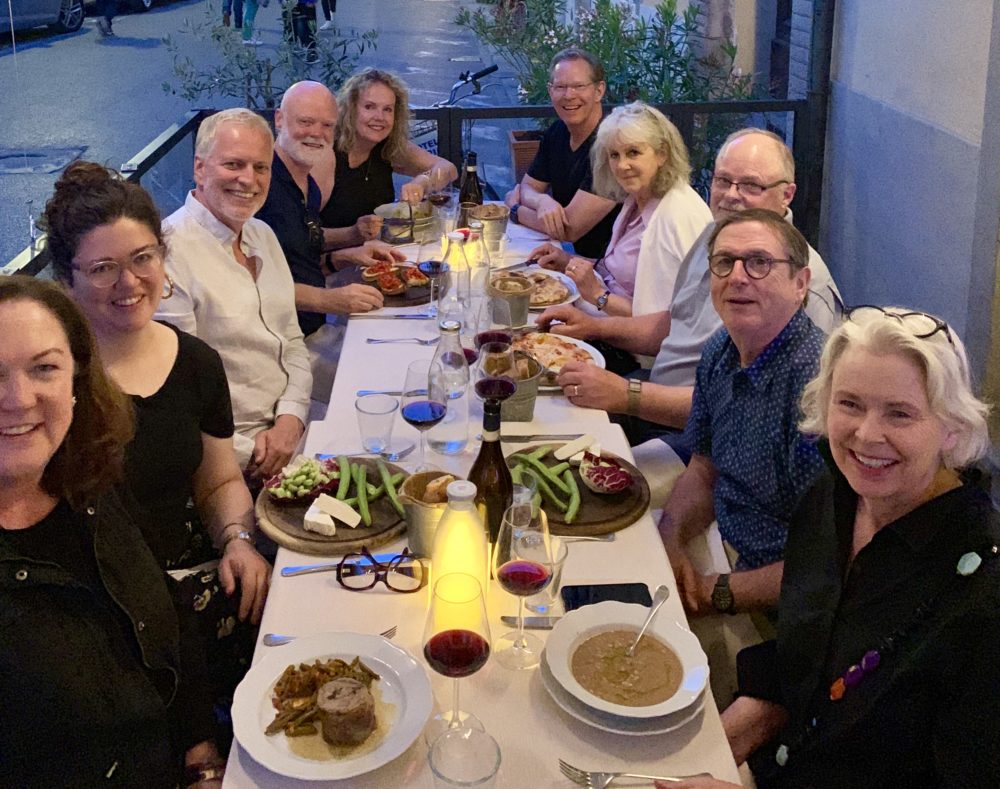

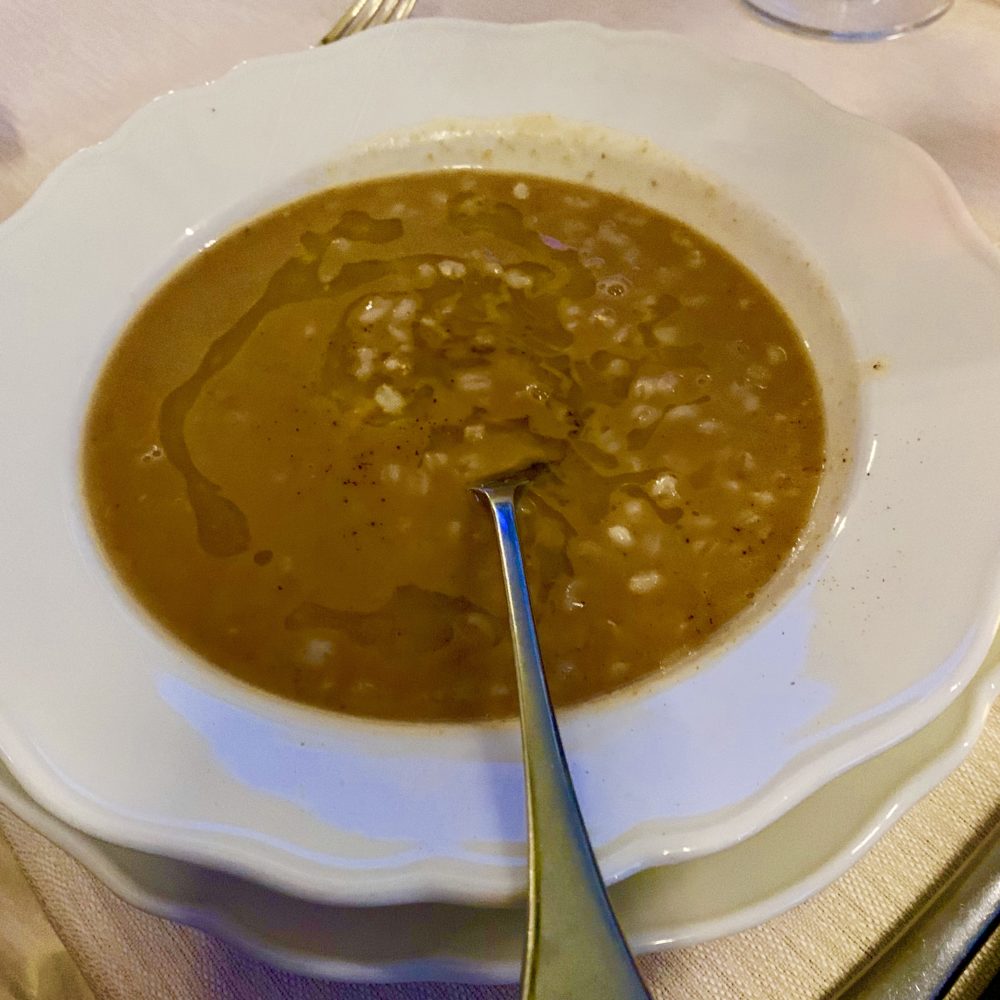
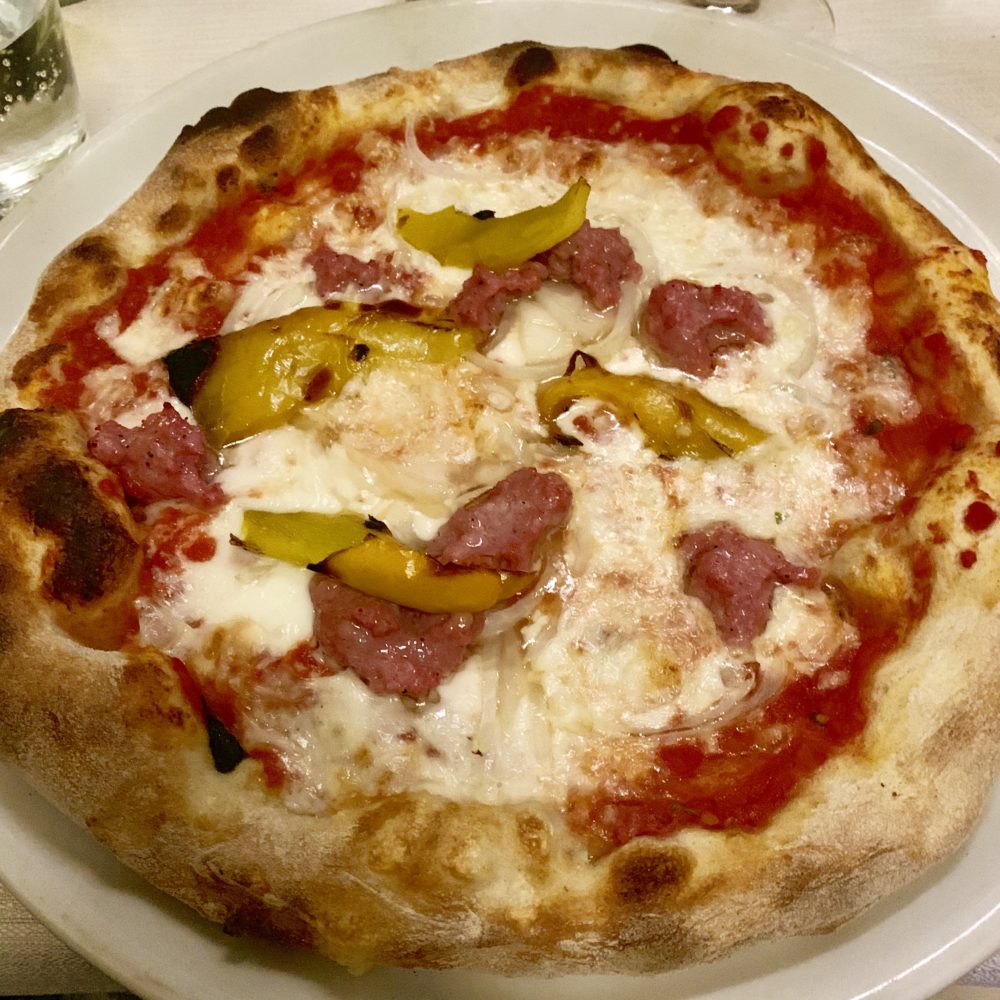

Dinner-02 June
Located on the top of the wall, San Colombano was a great place to enjoy our meal outdoors. Hosted by Bob, dinner started at 8:30 and went on till well past 11 for most (1AM for Brett and Kitty!). The setting was a lush landscape (our table was under mature trees) with the cathedral highlighted beyond. Pretty spectacular.
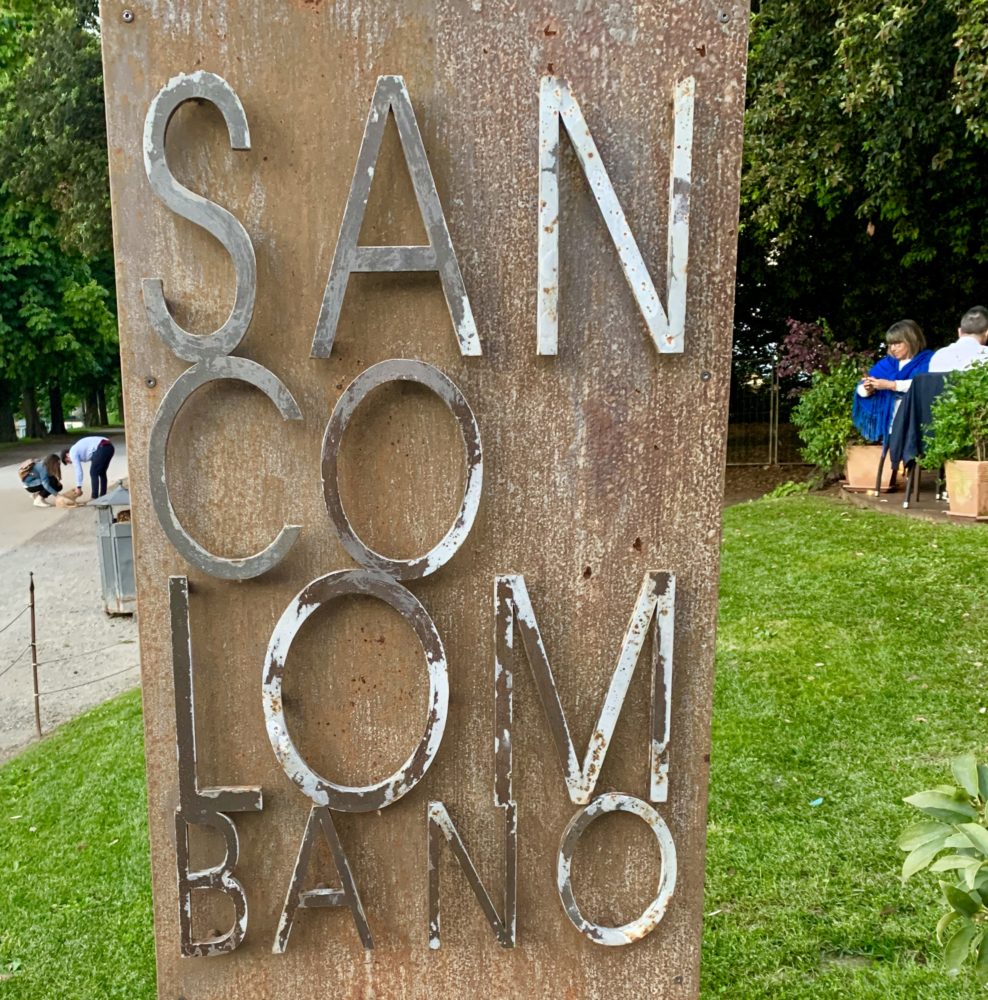
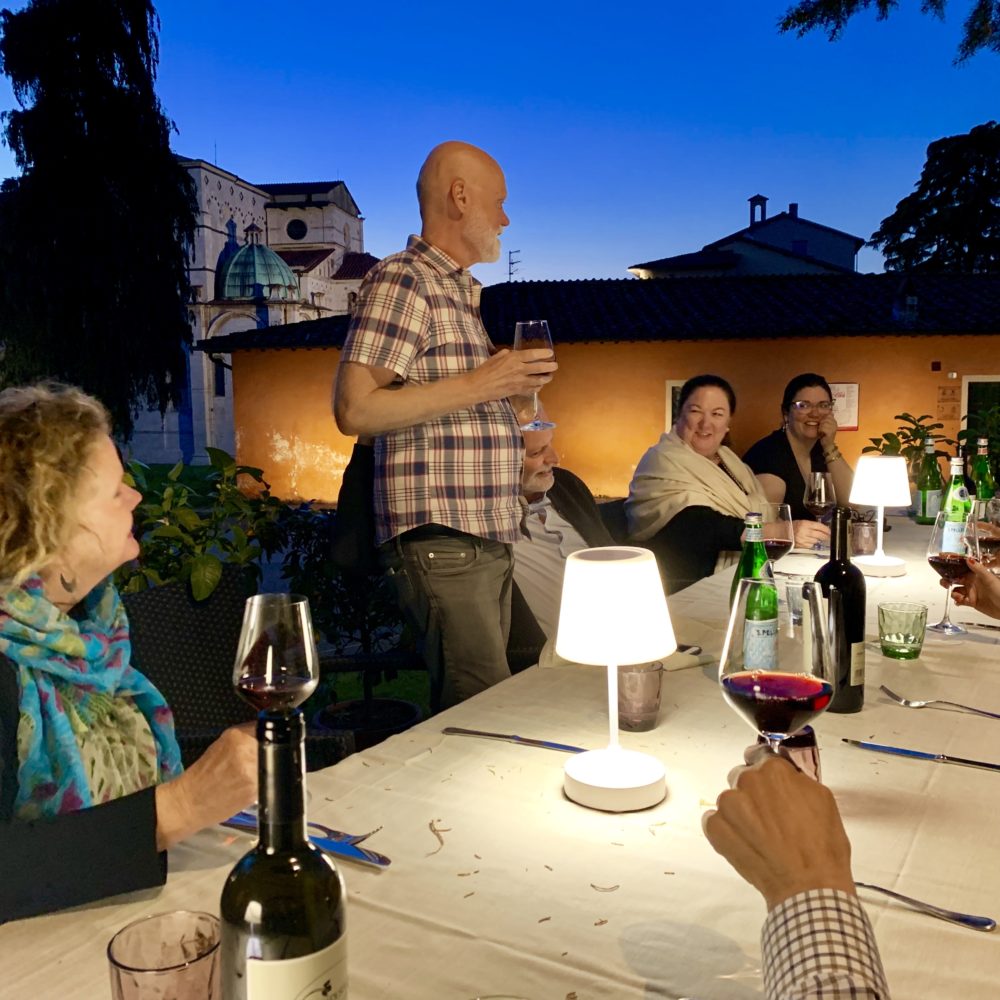
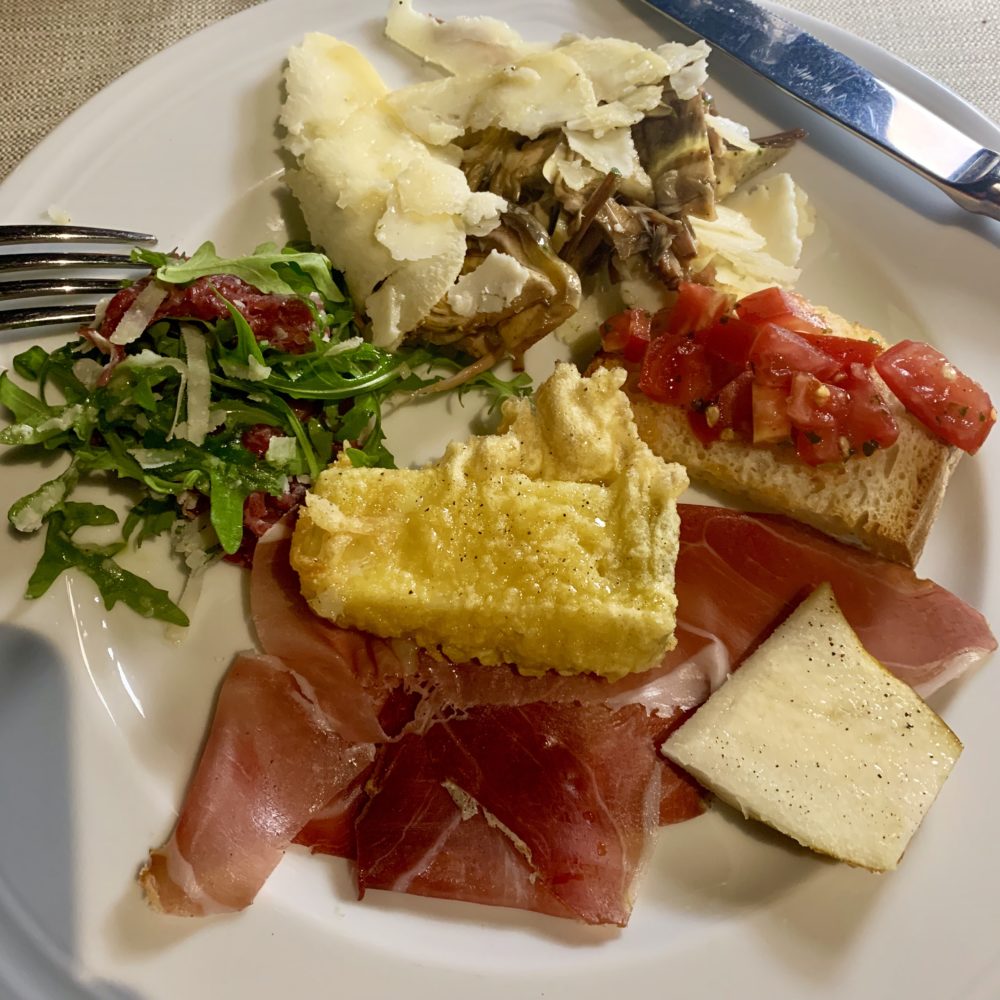
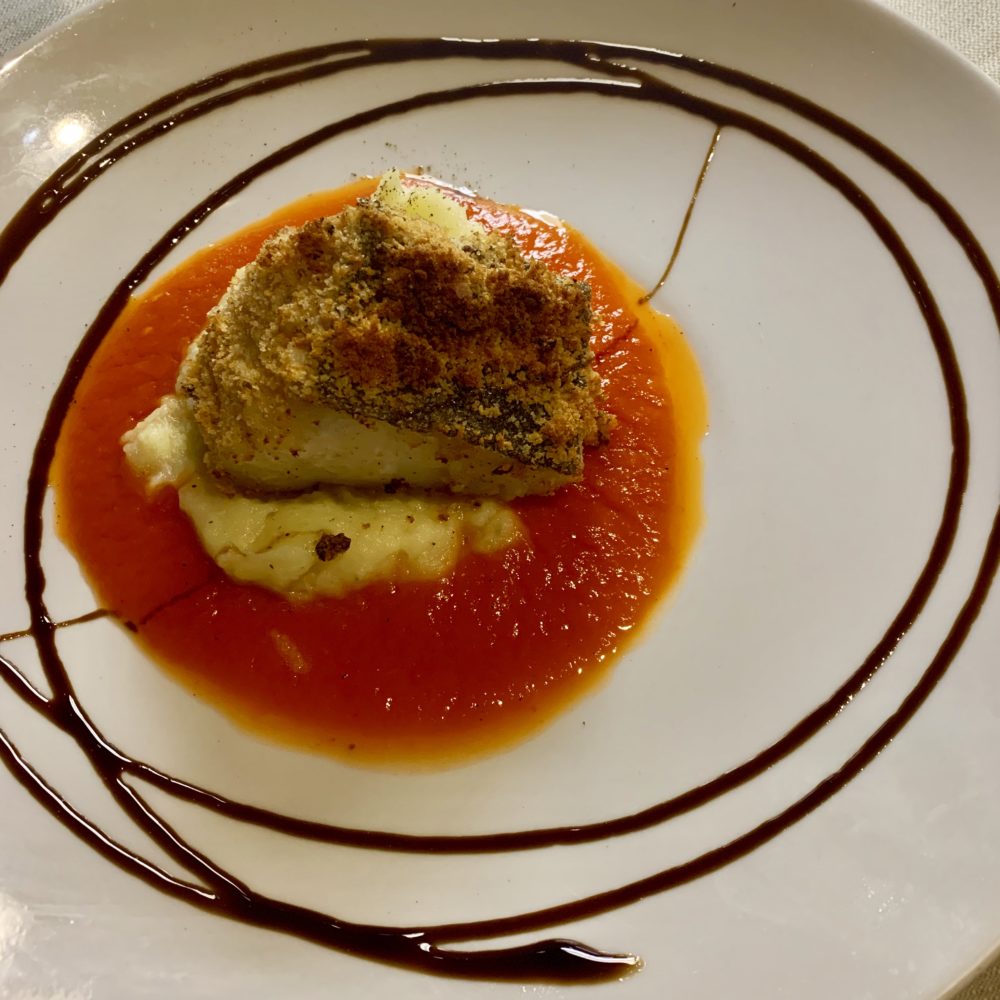
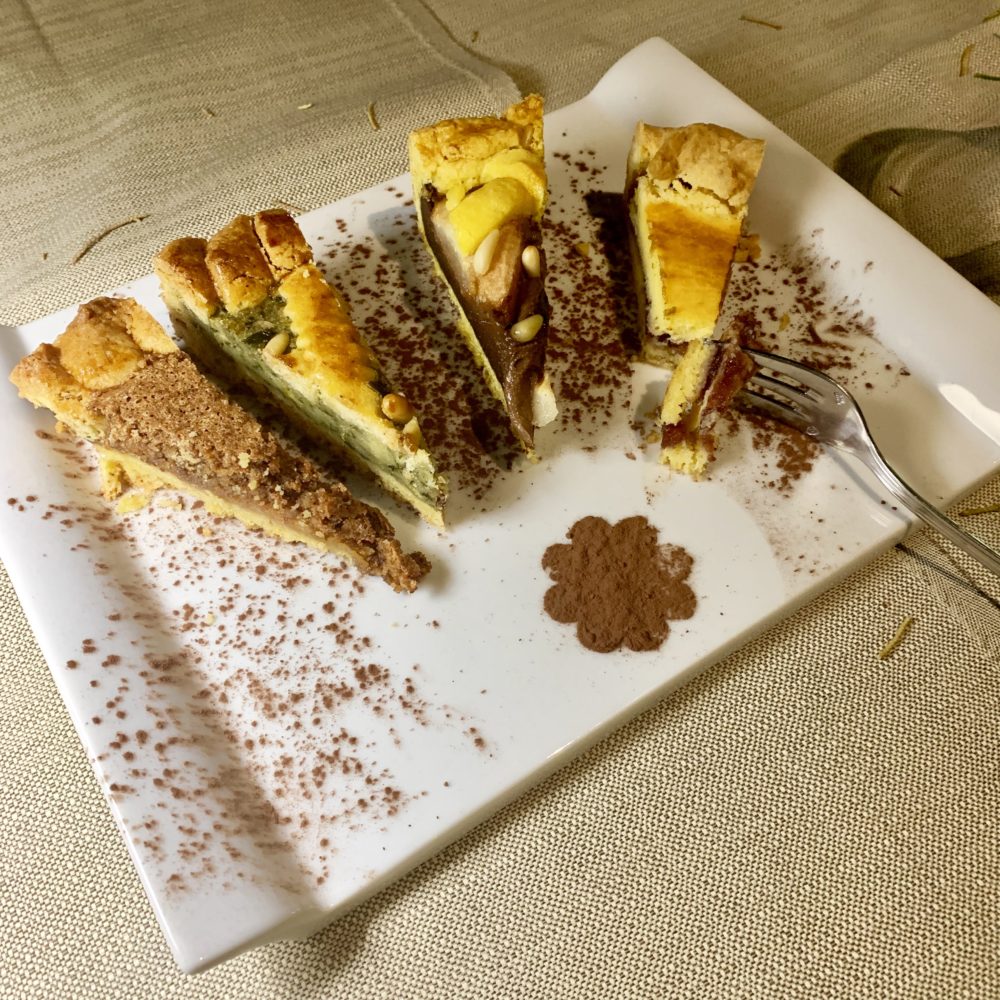
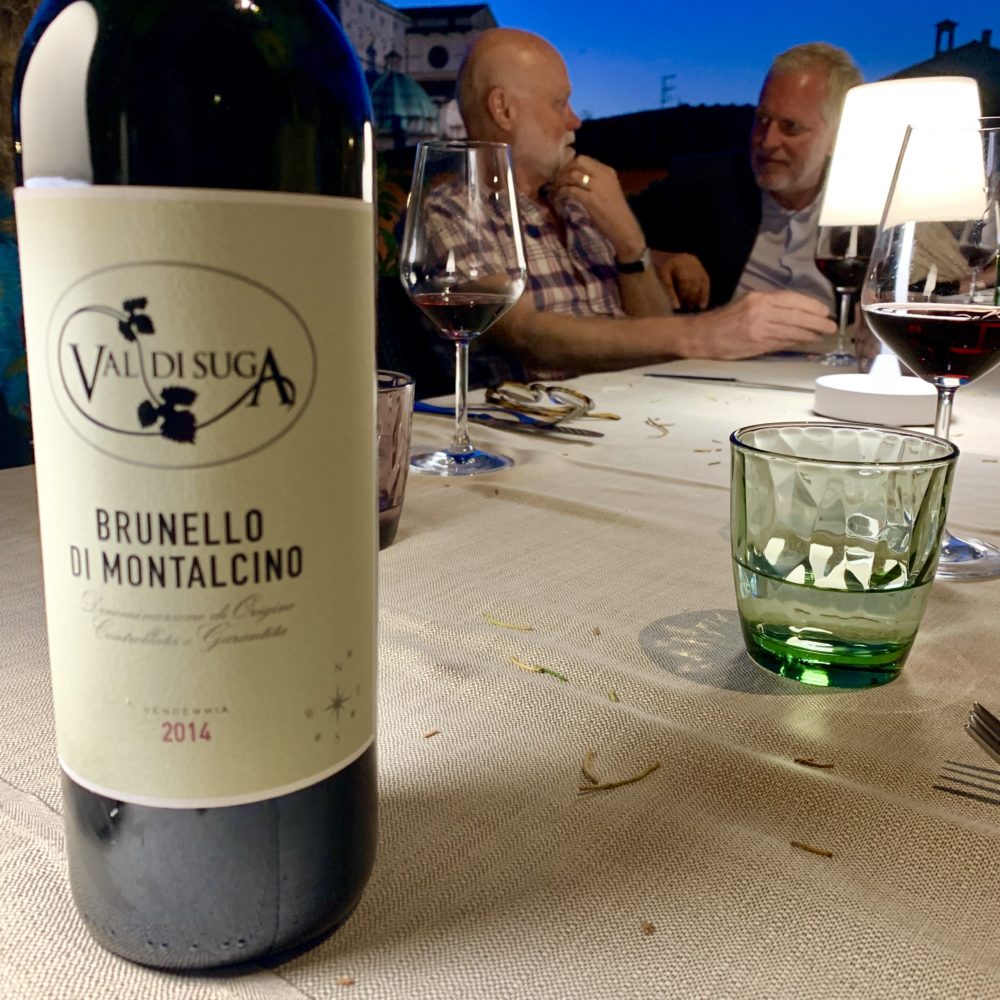
B Day!!!! Dinner-03 June
Dinner festivities started with photos along with a gift of a tiny toy Vespa for each guest.
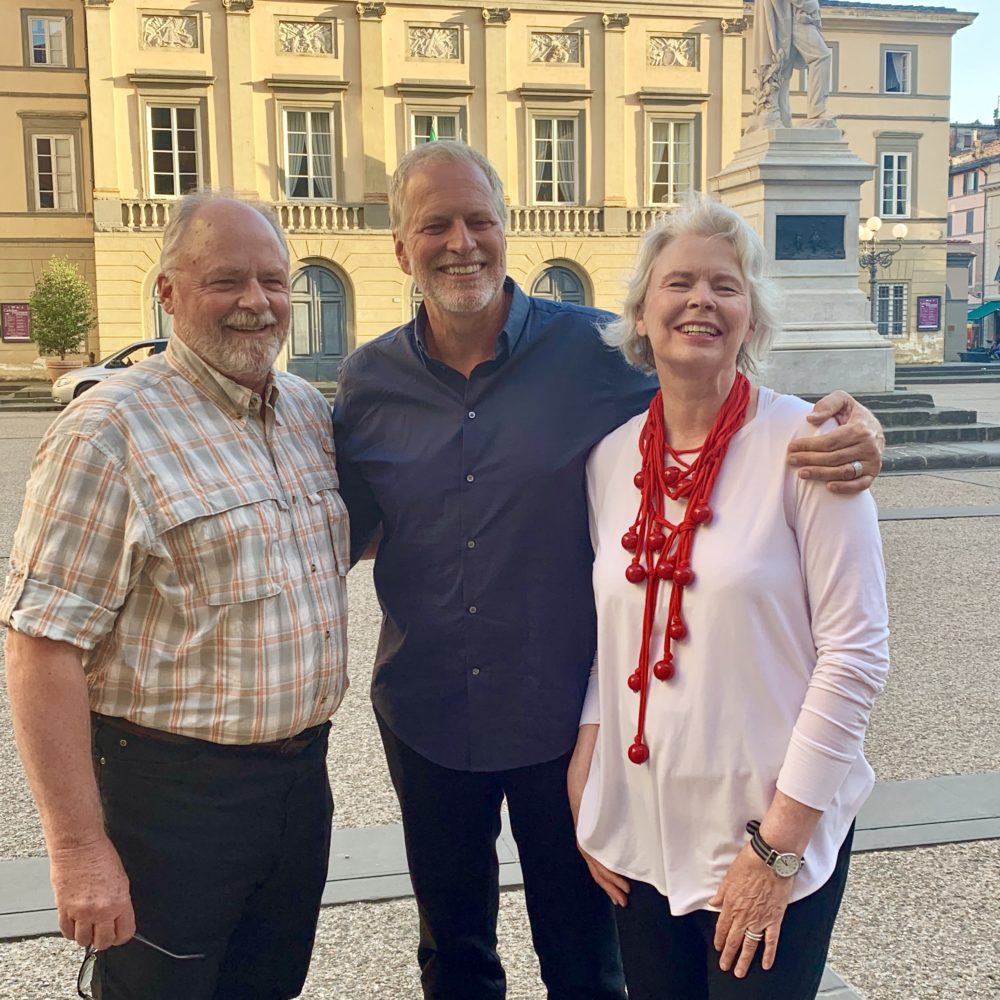
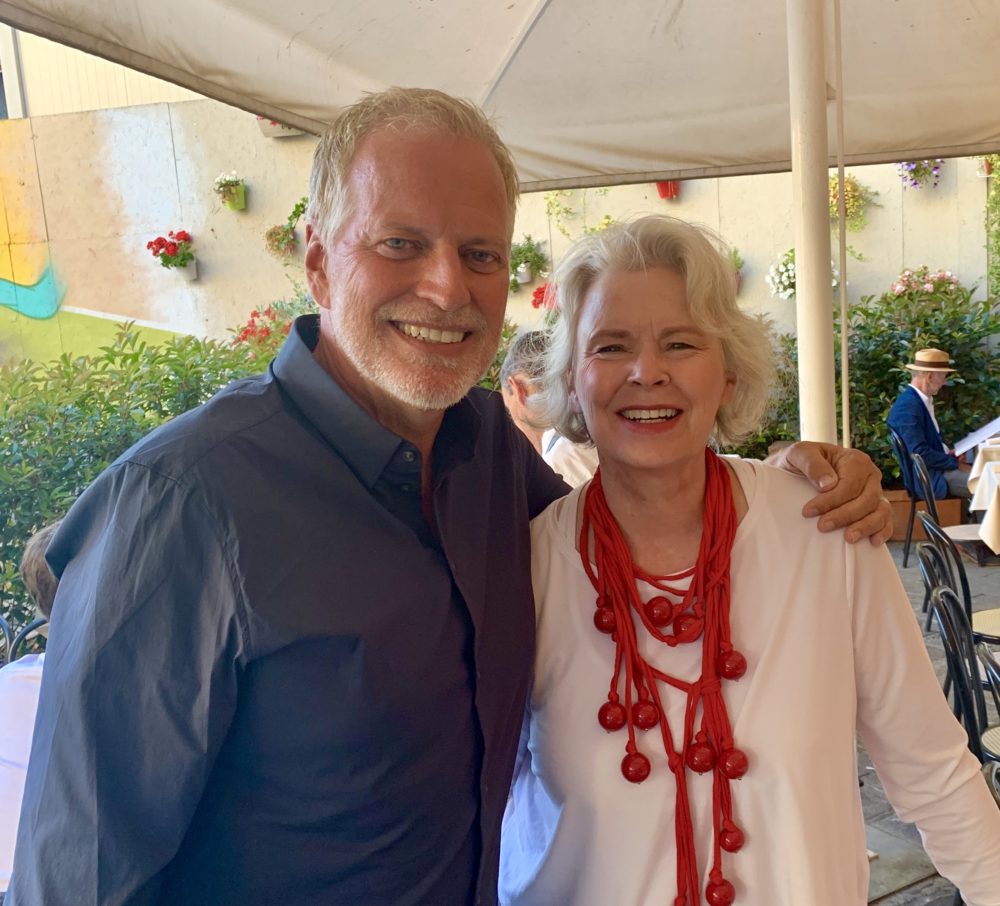
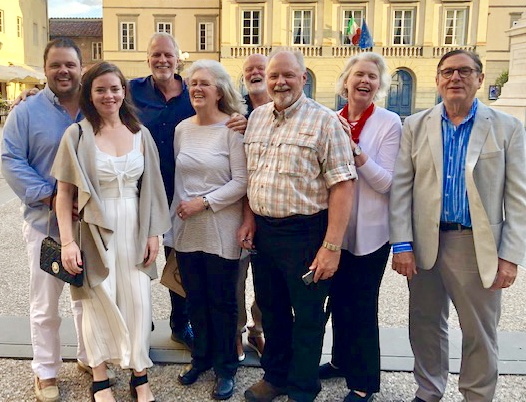
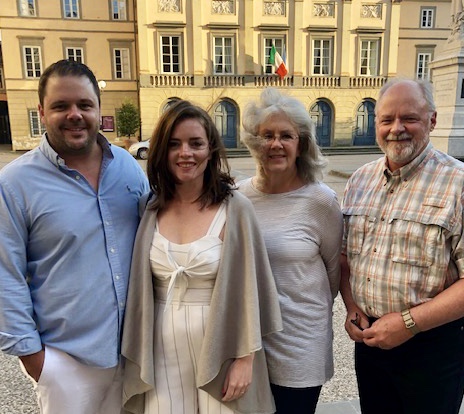
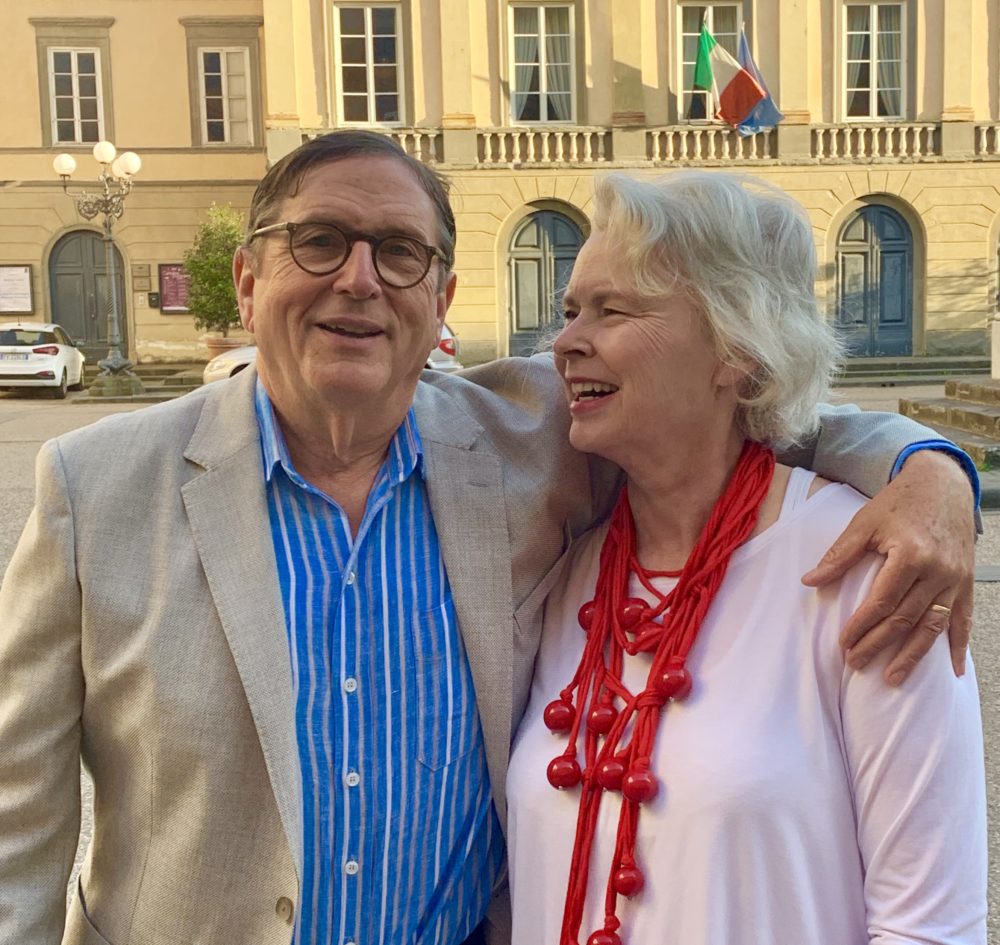
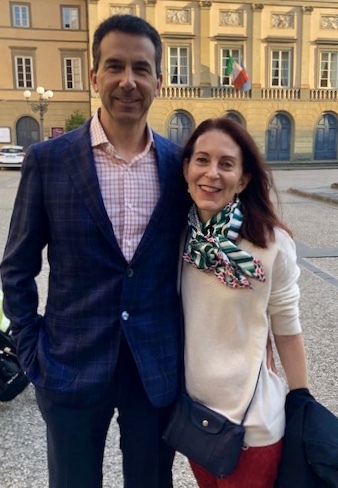
The staff at Ristaurante Giglio (named after Richard and Bob’s dog Giggy’s great uncle on his mom’s Italian side of the family) were impeccable in their service and attention. Bob arranged a seven-course meal finished with a birthday cake made by the restaurant. The chef came out several times to see how we were doing.
We were doing just fine.
How else would we be given the setting, the friends, the food, and the wine?
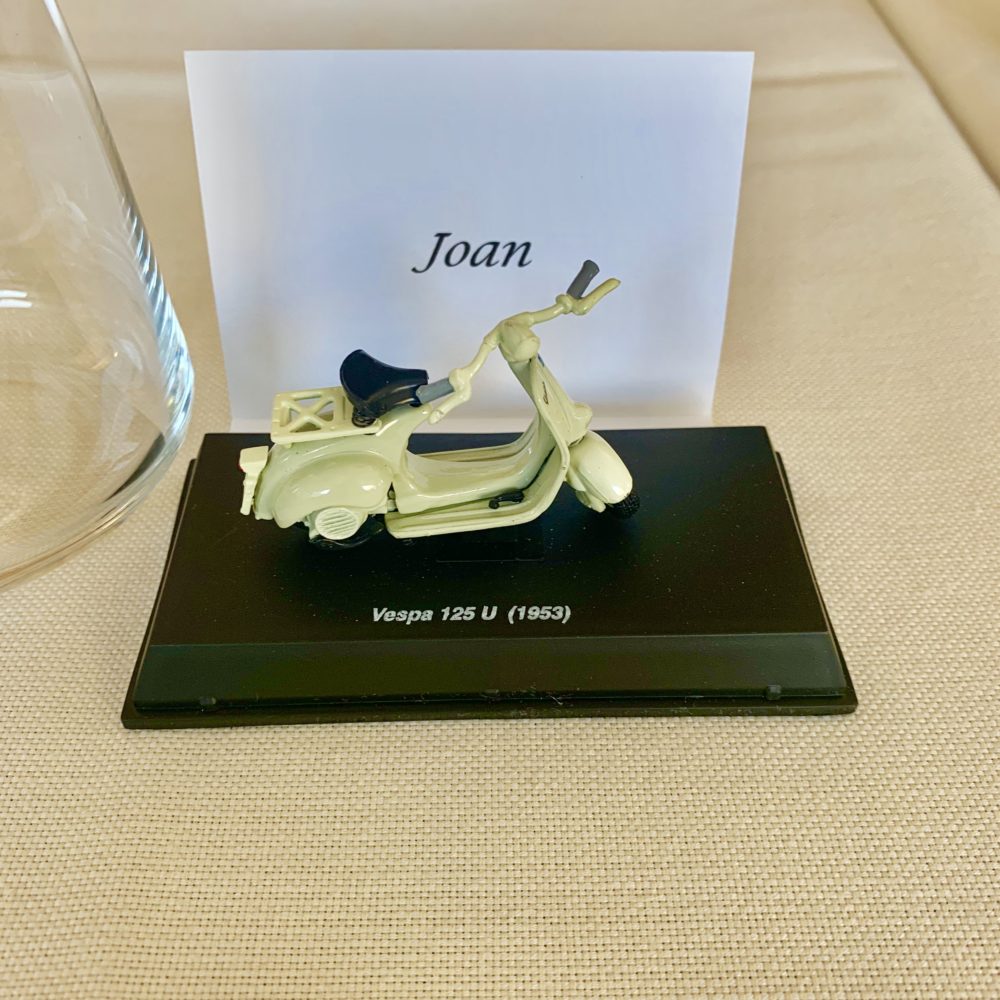
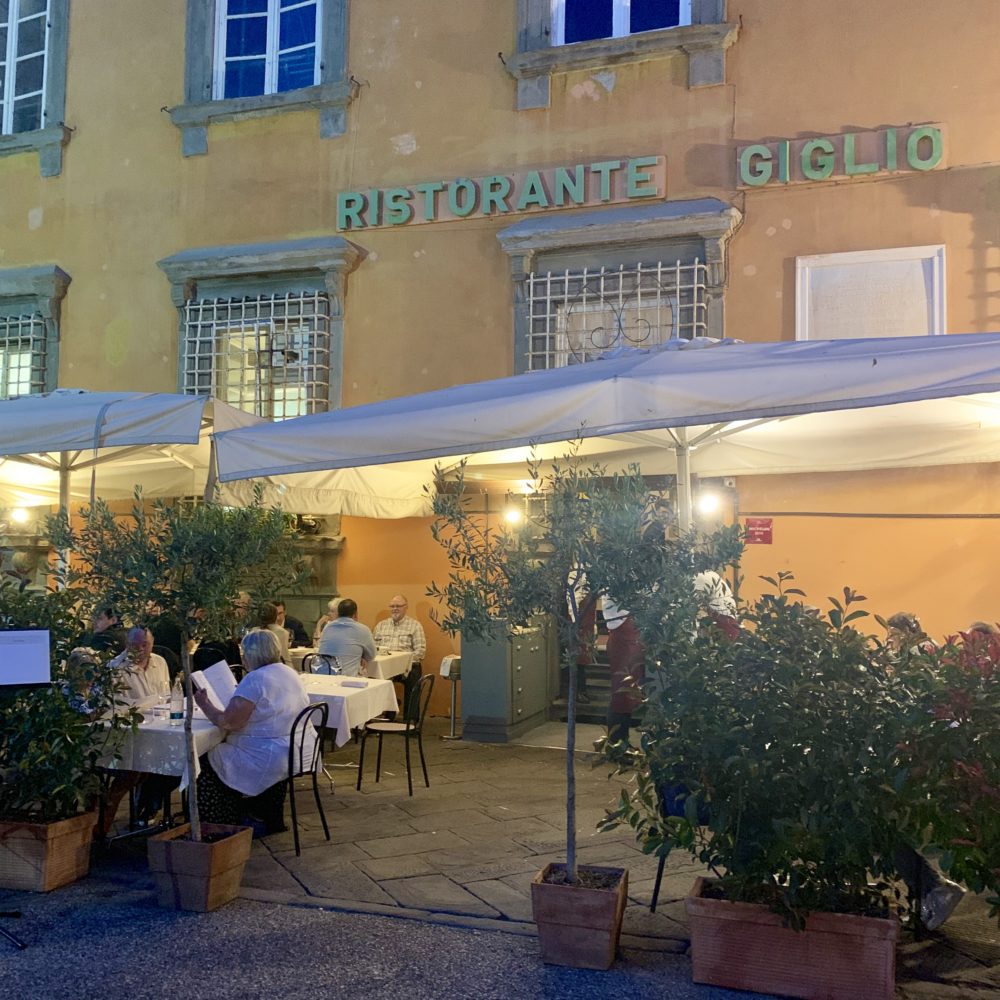
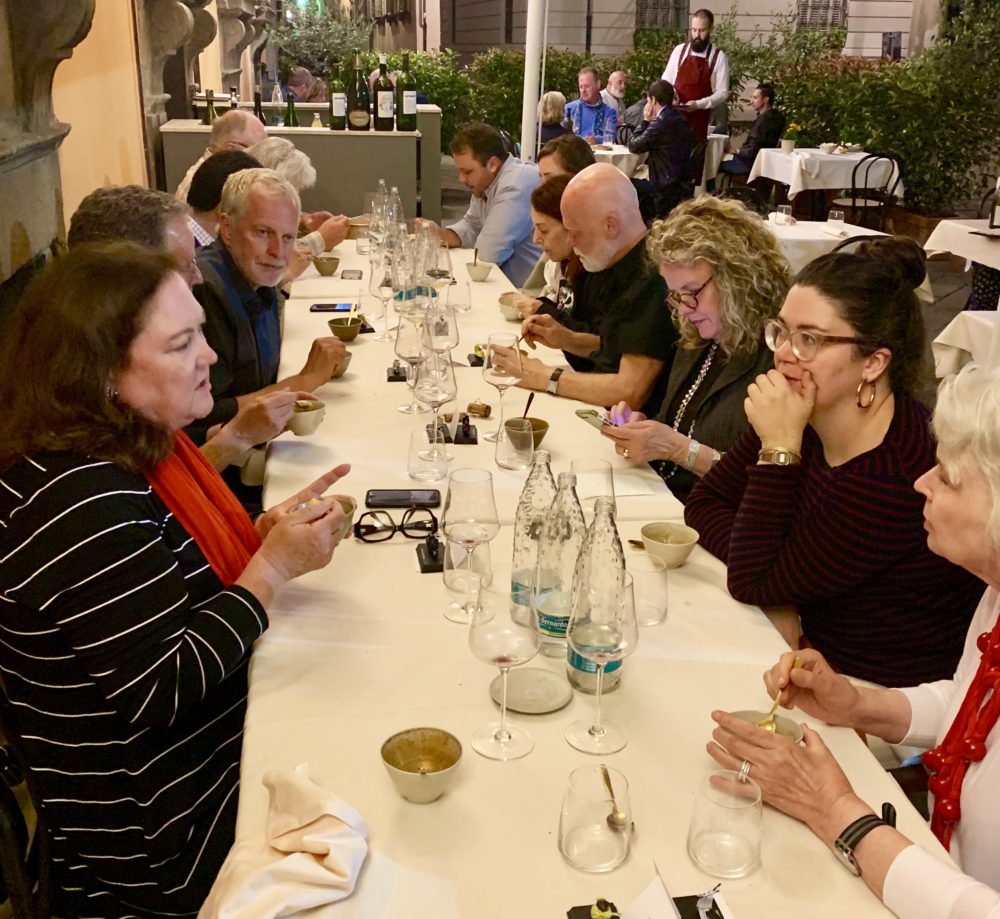
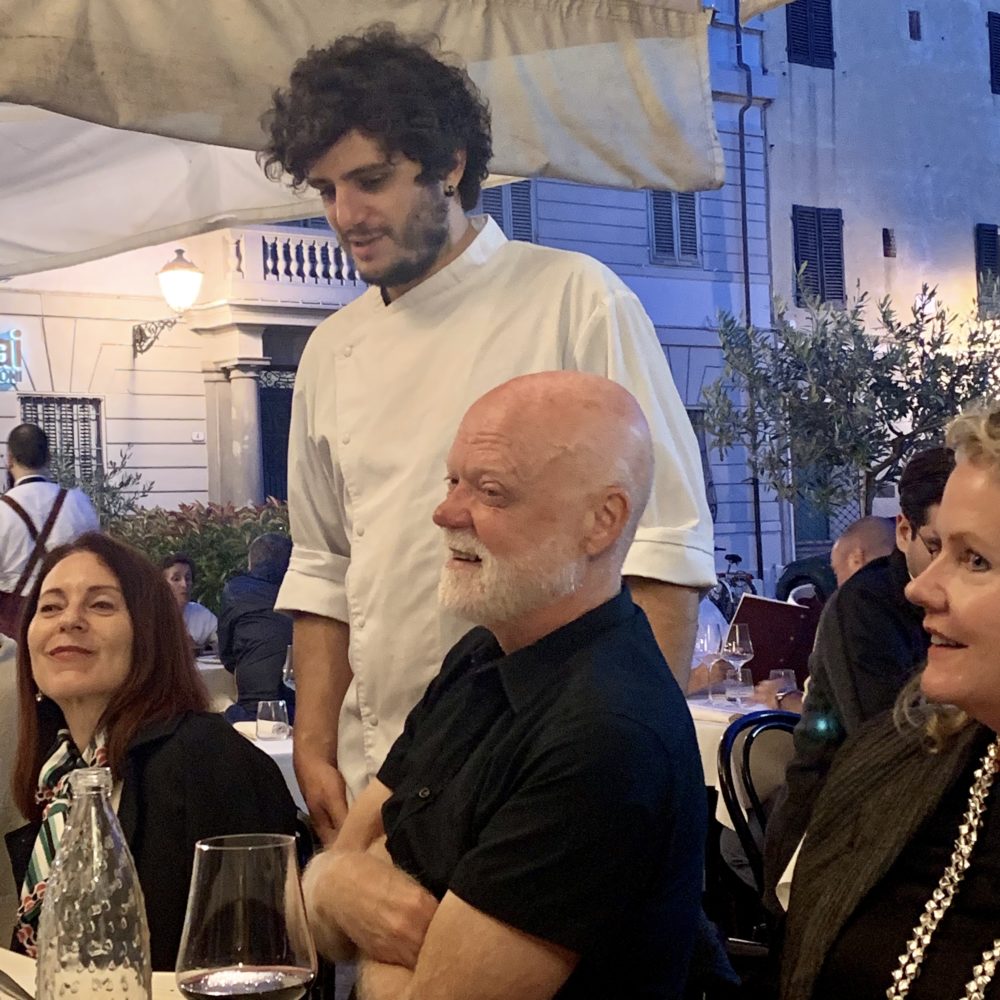
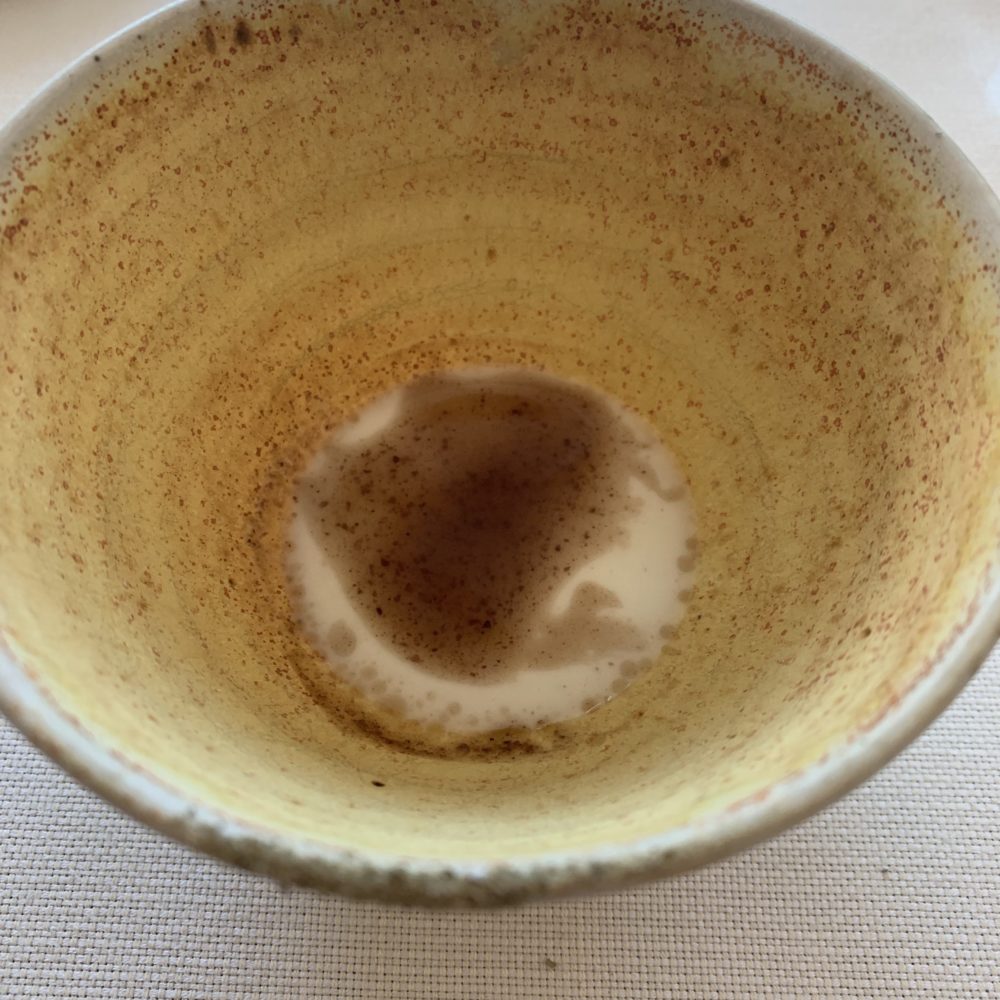
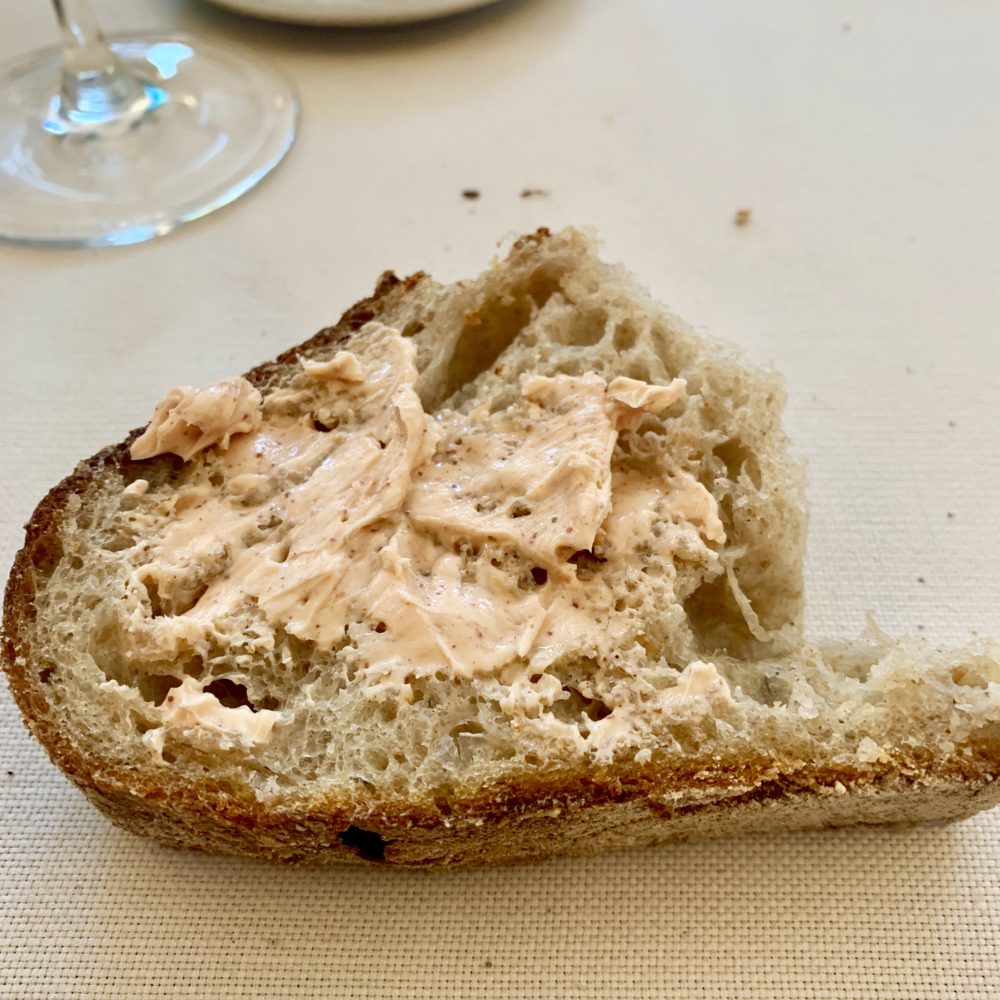

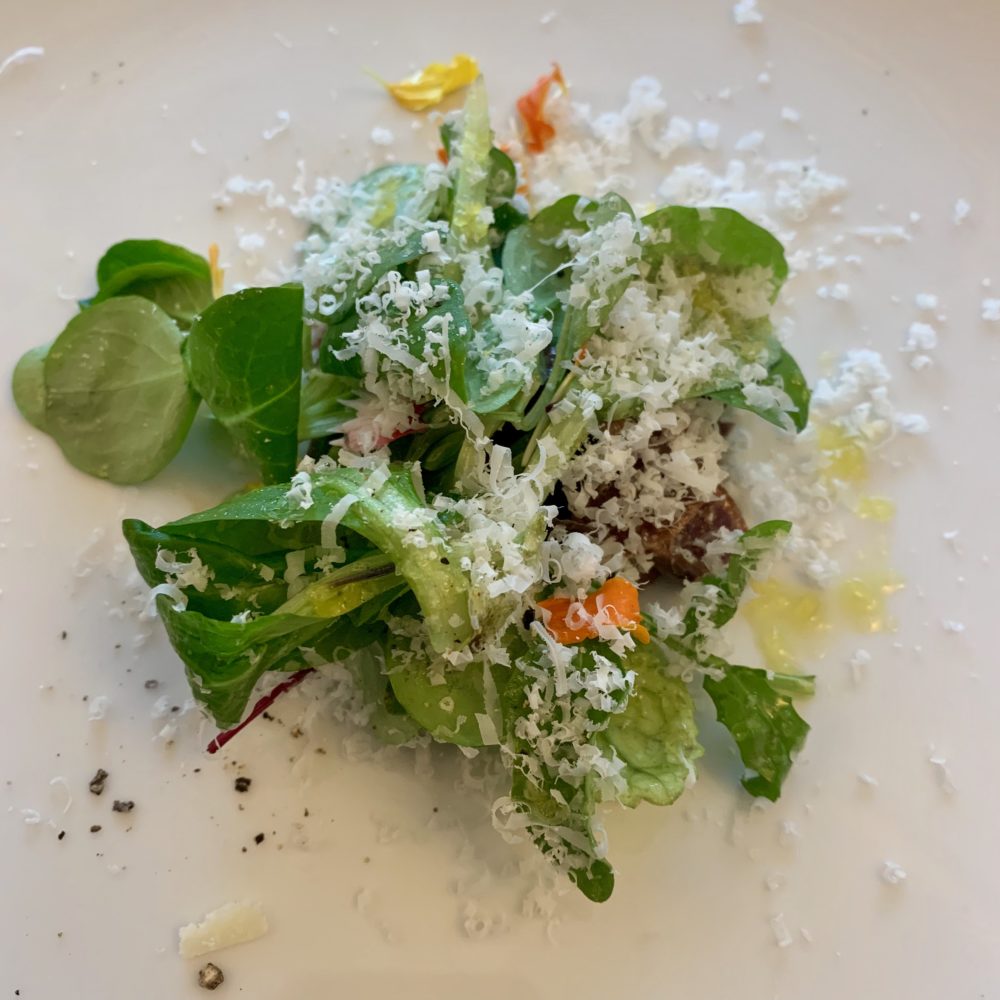
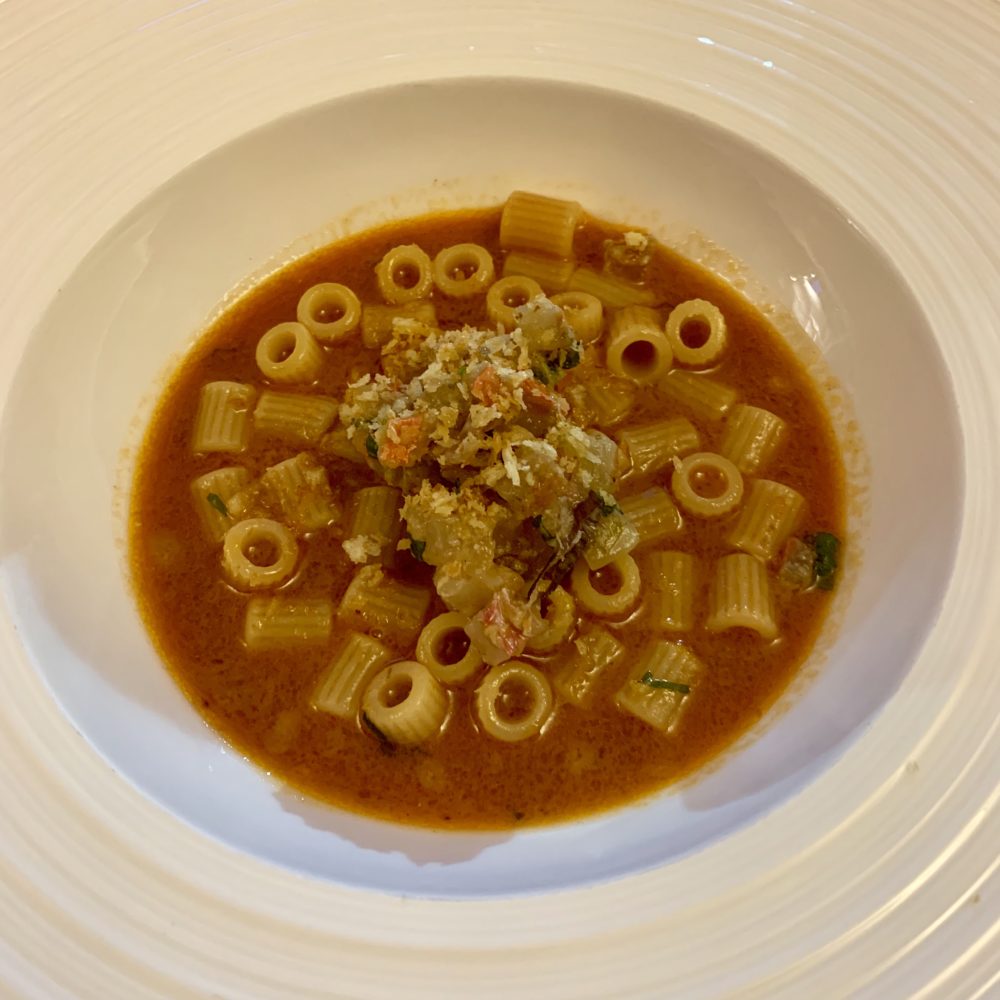

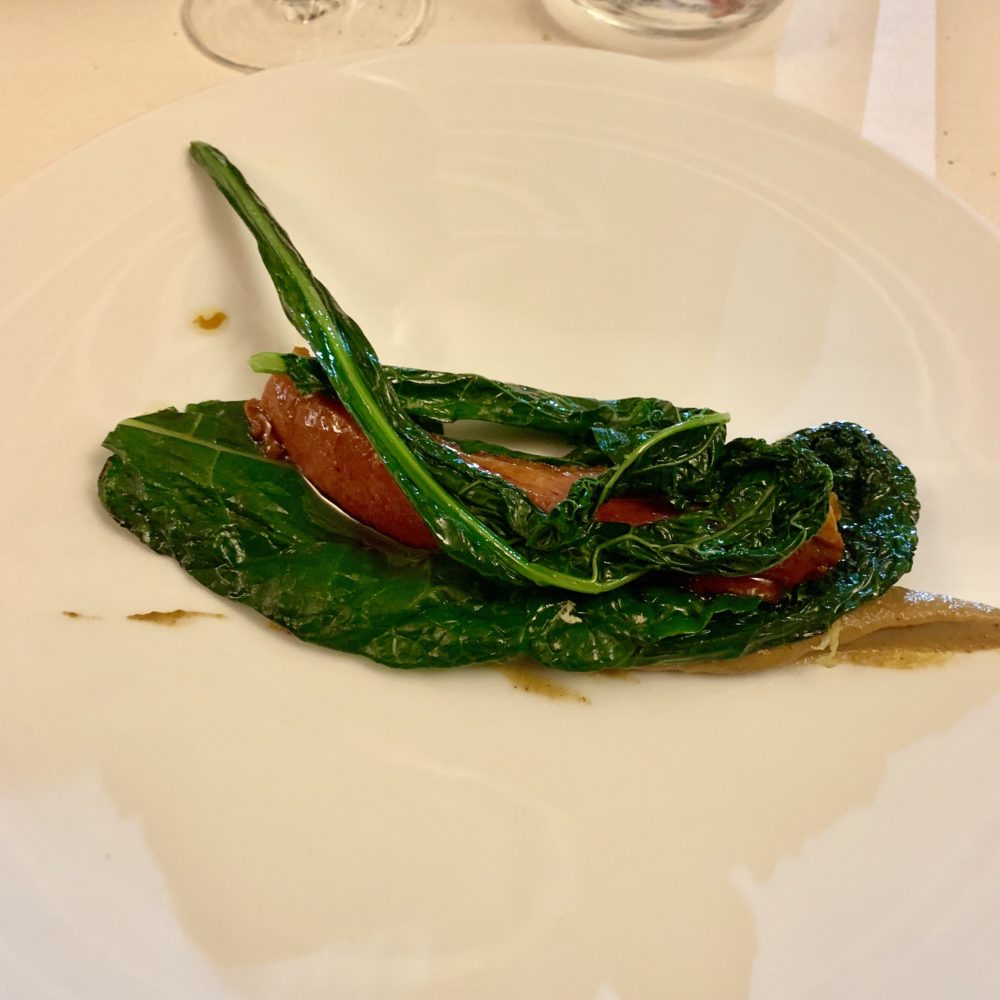
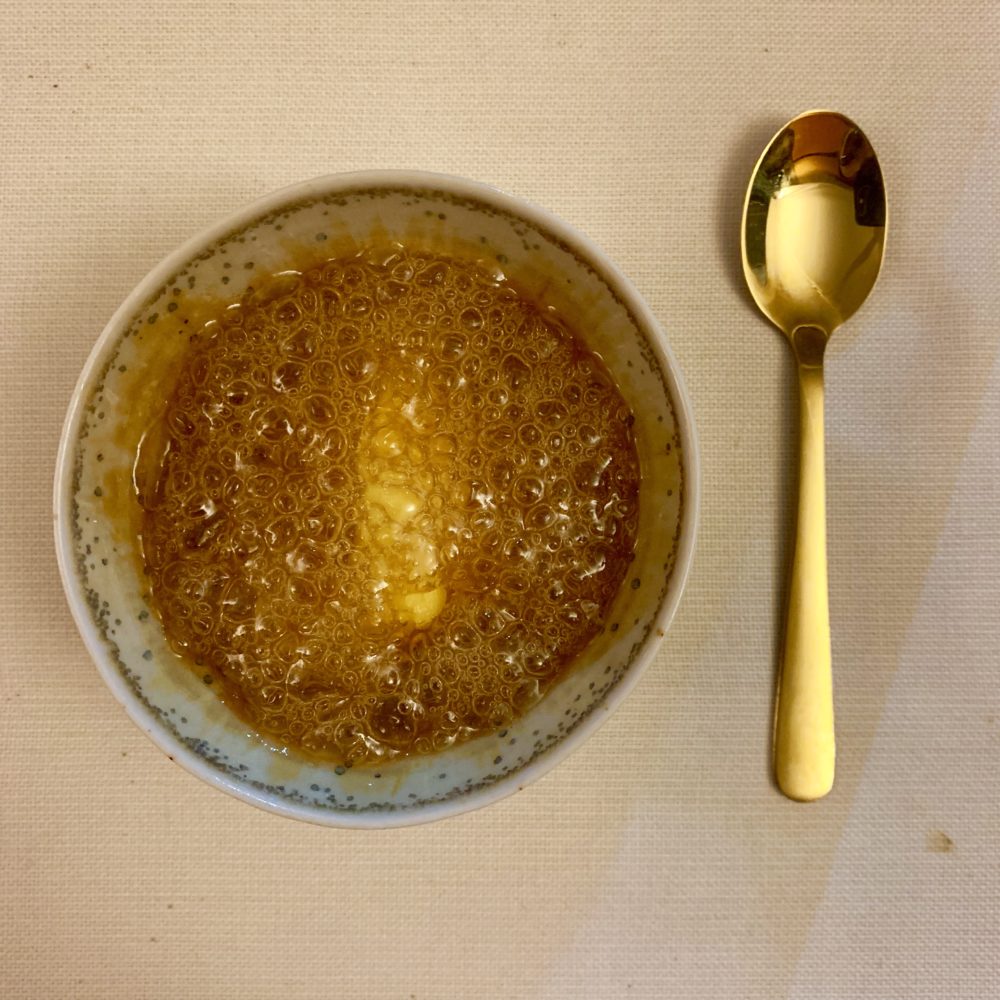
Richard blows out a symbolic 65 candles
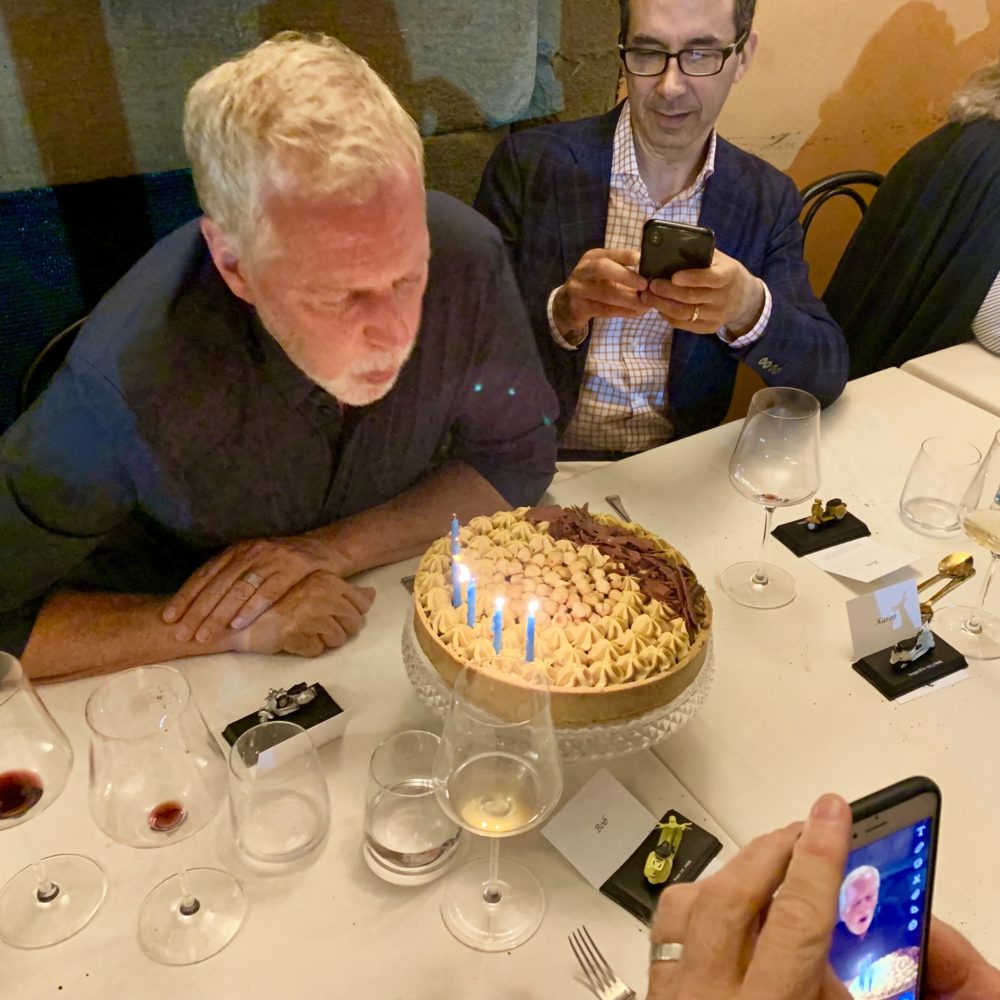

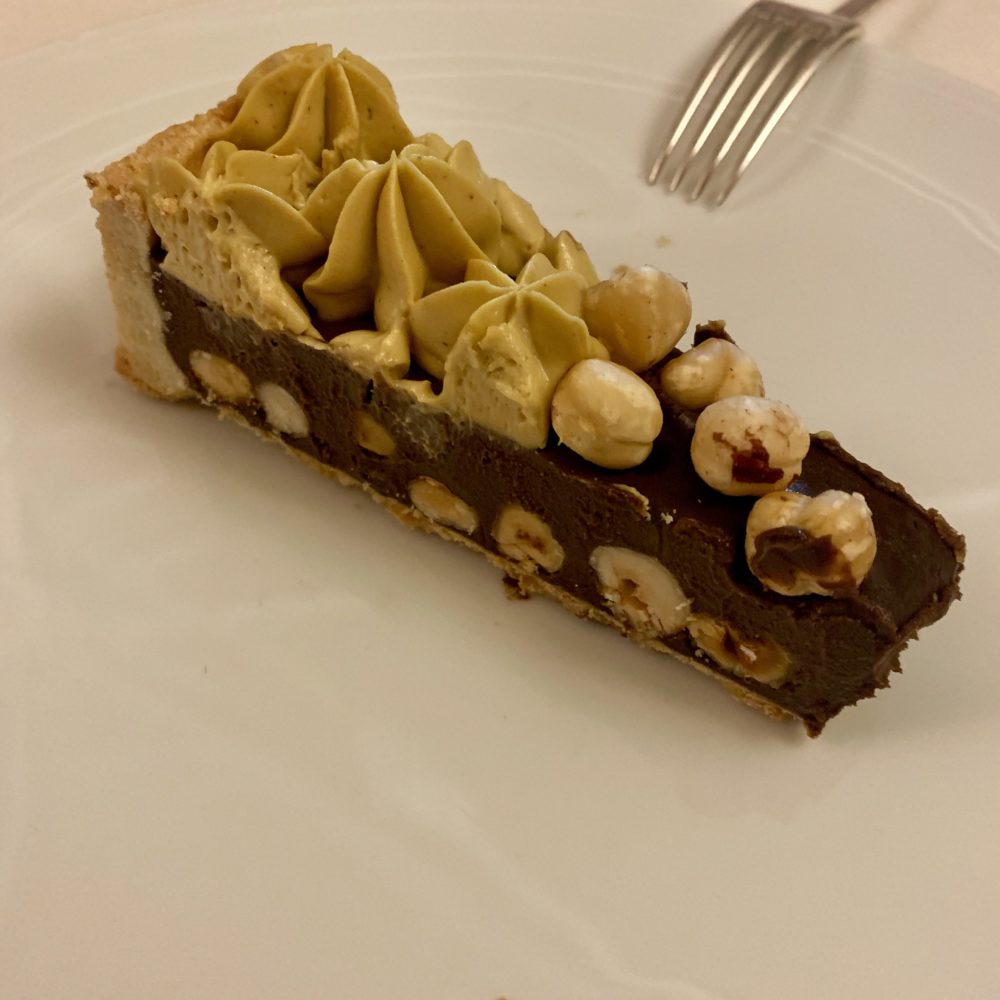
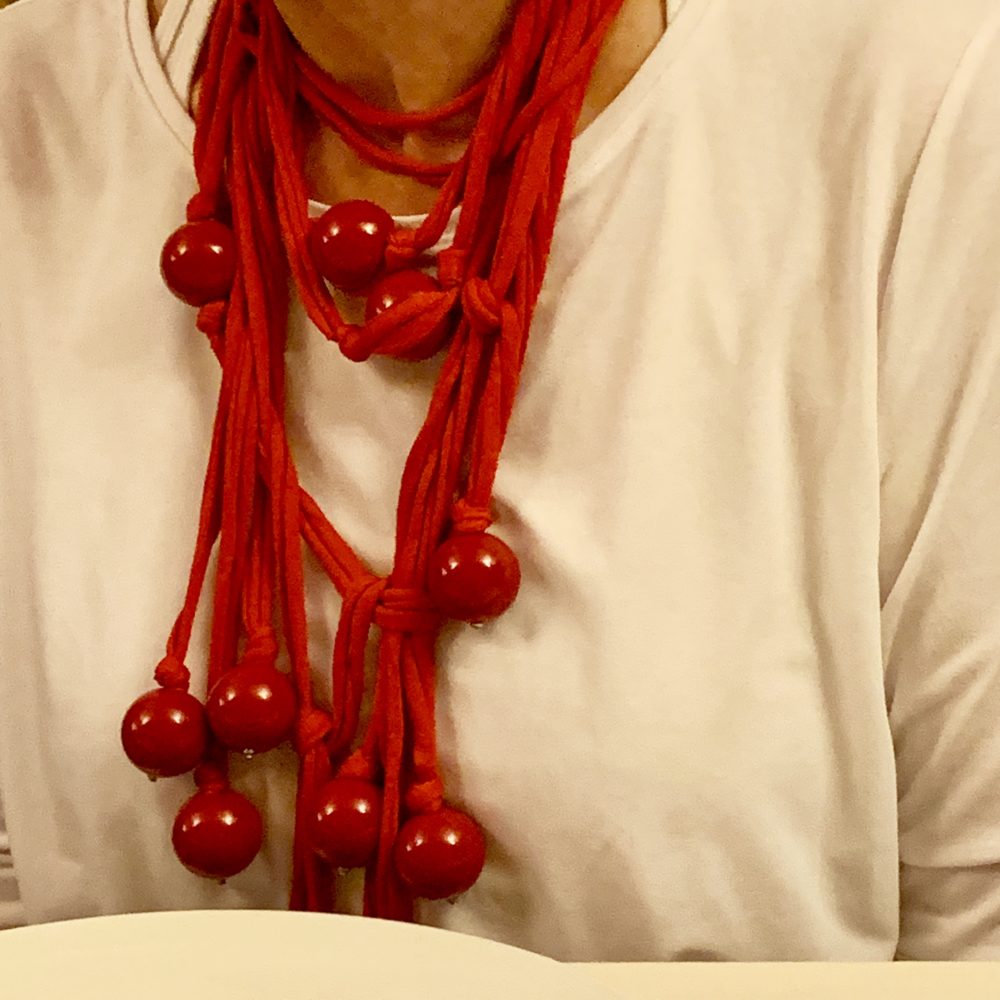
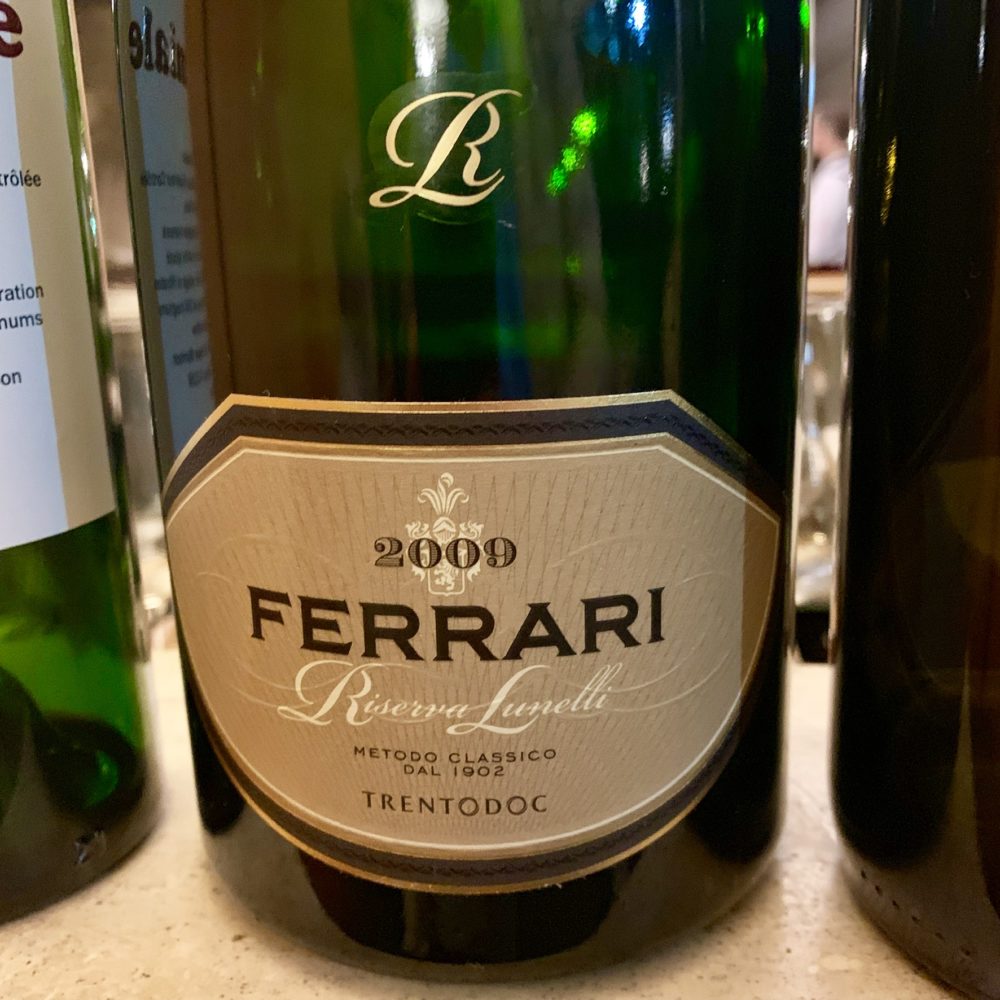
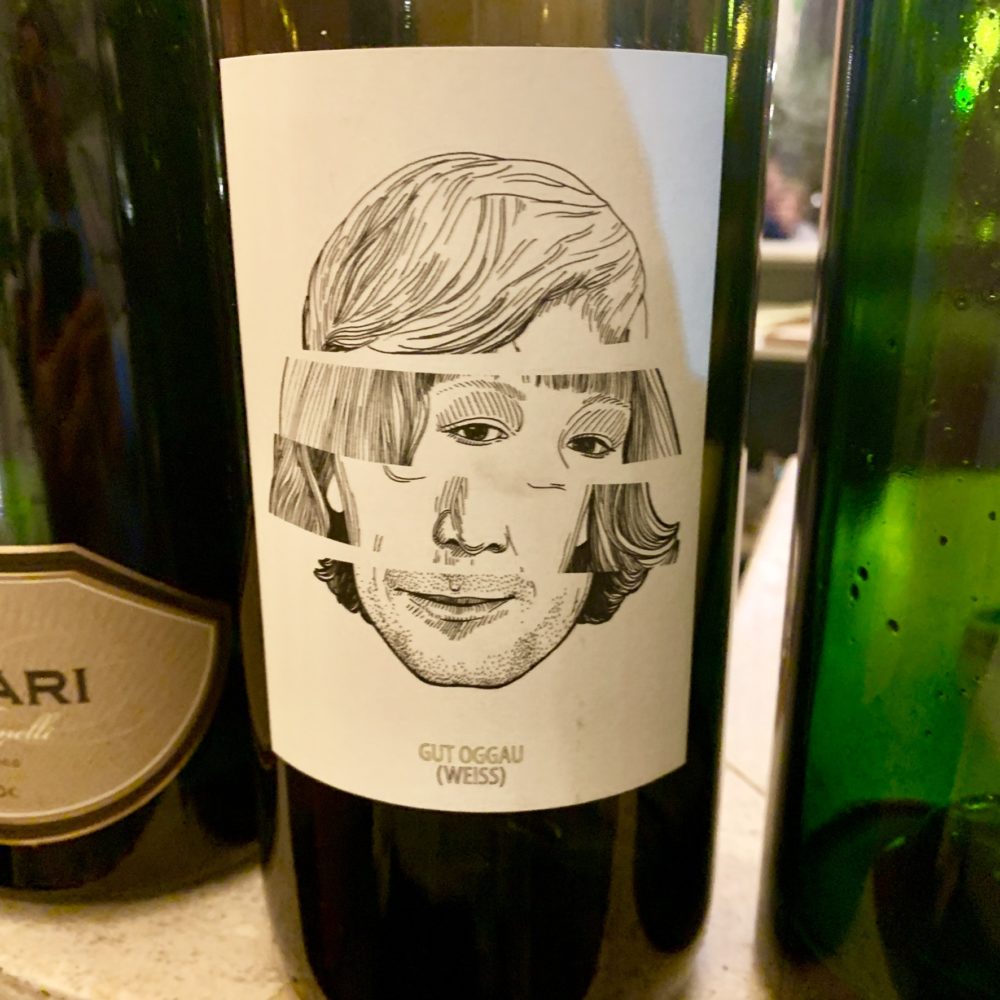
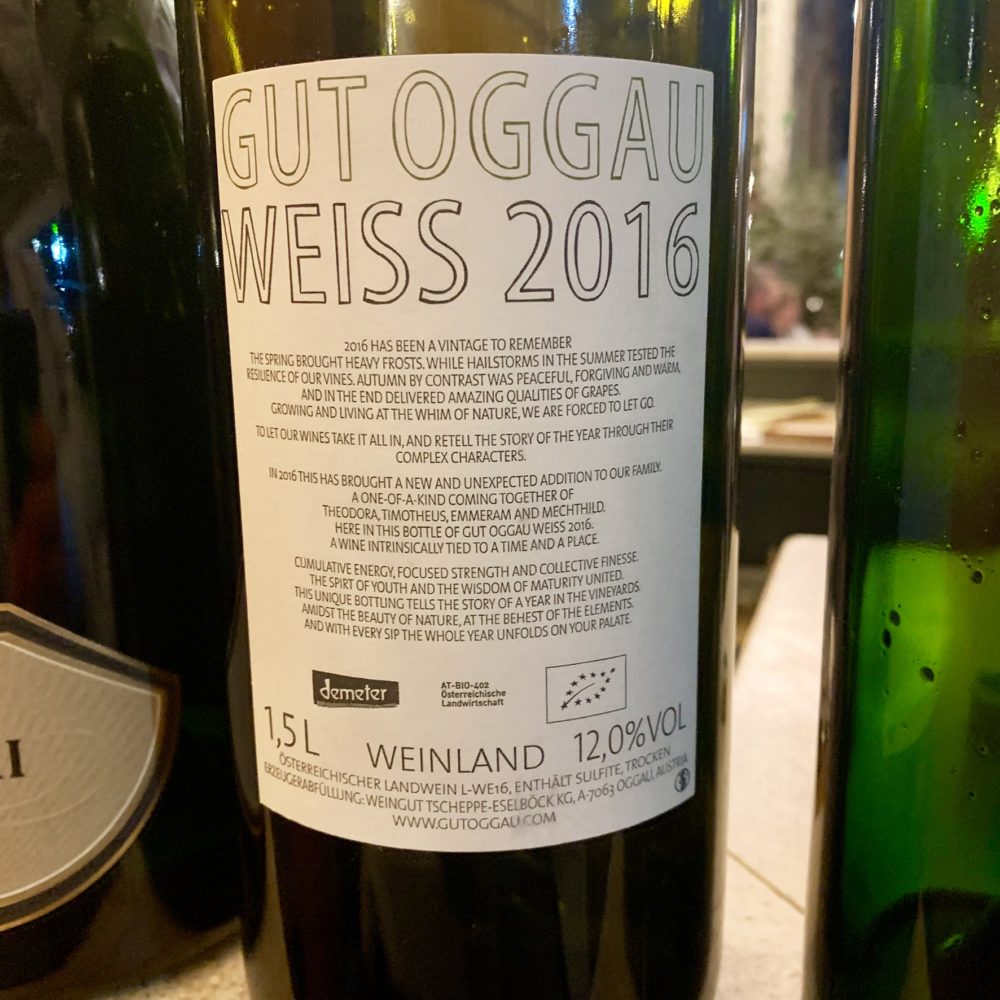
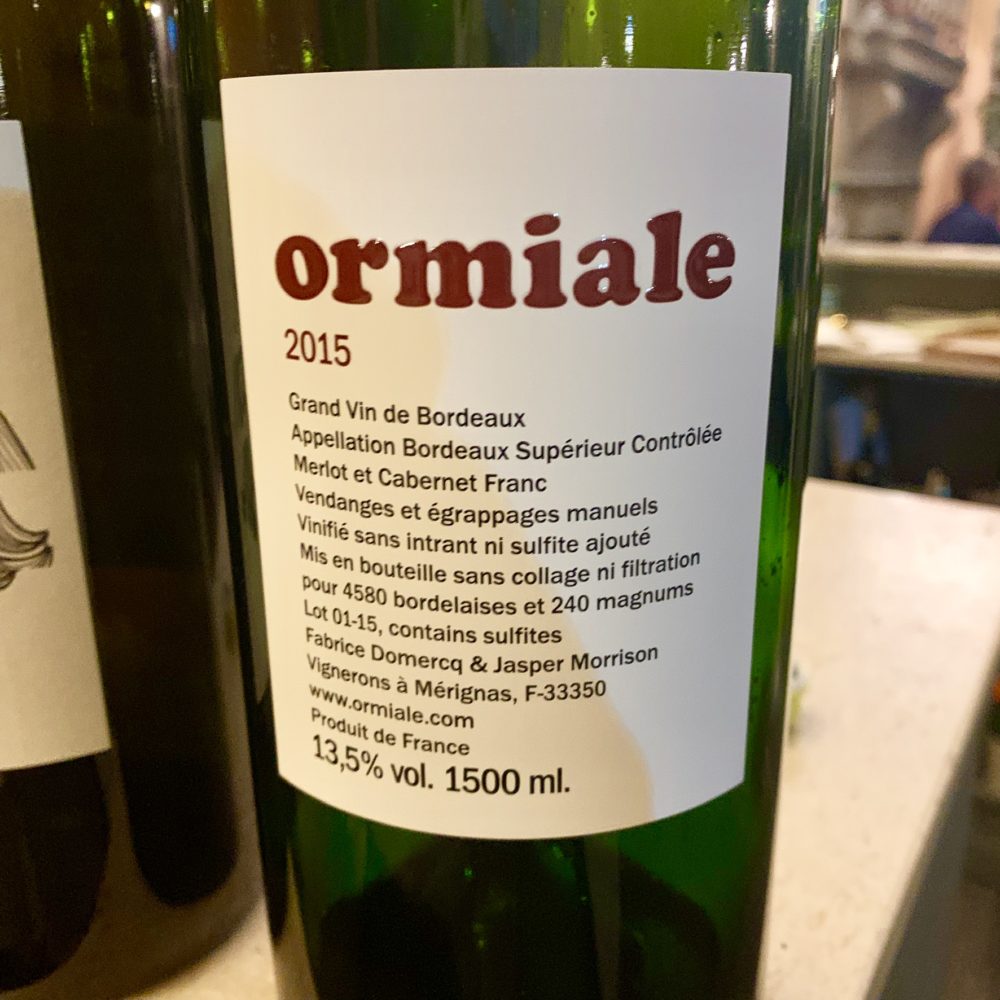
That’s it for the celebration!
More to come on Lucca and B+B’s excursions.
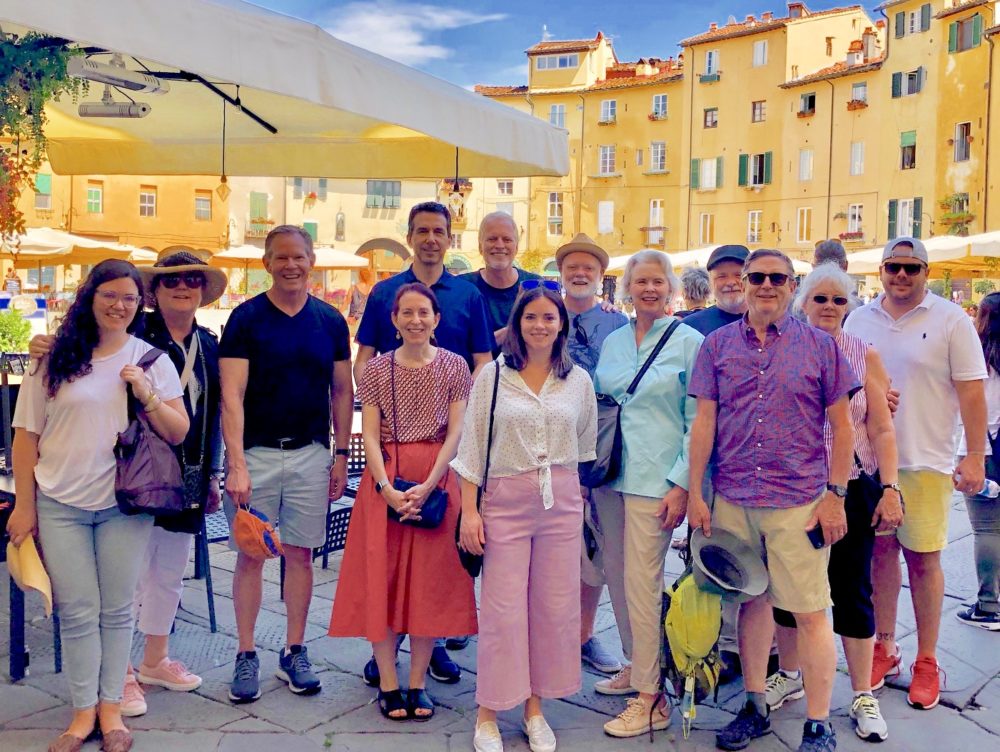

How many beautiful photos and how many beautiful happy people! I’m happy for you!! I love you and I also love all those people who contribute with their presence to make your stay in Tuscany magical.
Thanks!!
OMG! The place, the food, the wine, the cake, the people — and Bonnie’s necklace. Over the top! Happy birthday, Richard!
JANEo: One of many necklaces. Stay tuned for further photos!
I have noticed the houses with towers. Now I know why. Thanks for the art history lesson and charming account of your family and friends. Love, Mardie
MARDIE: Yes! We did not understand how these cities evolved either. Interesting!